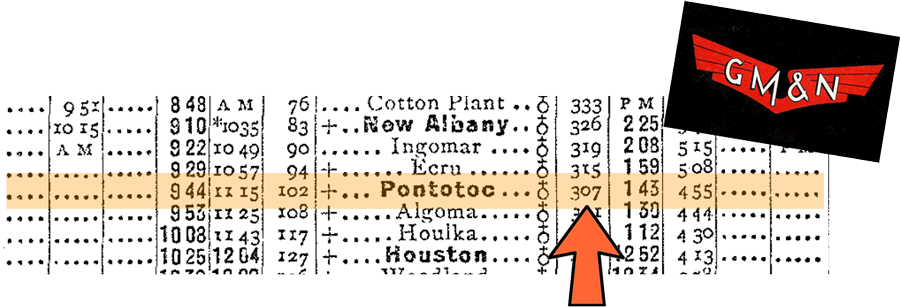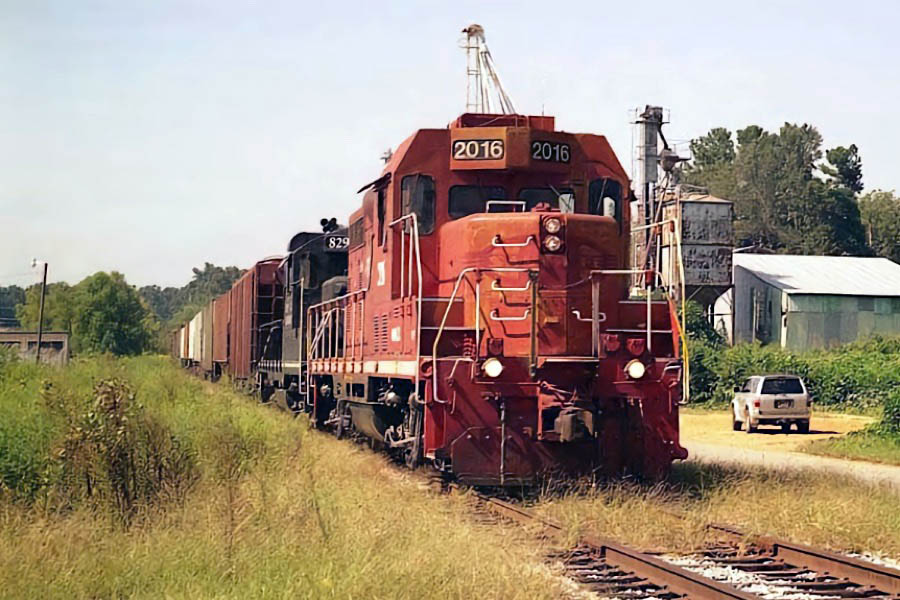








 |
Tanglefoot TrailMississippi's longest rails to trail conversion |
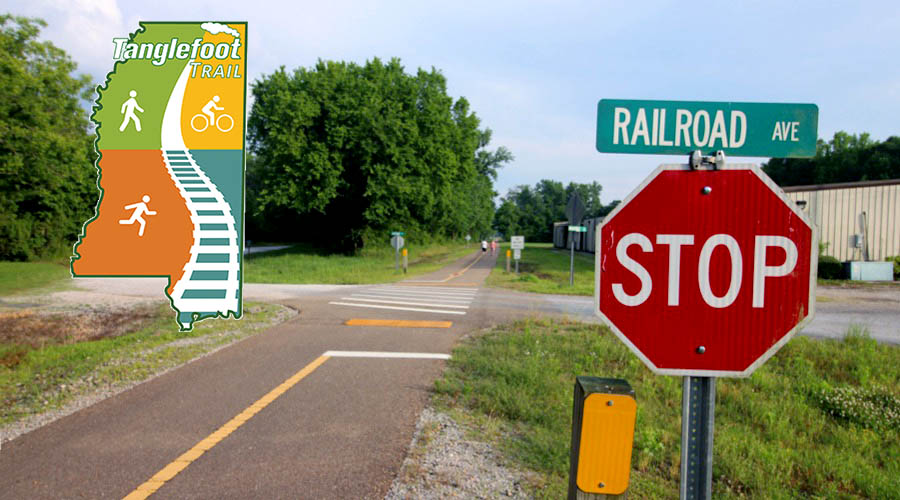
Ecru, Ms / Jun 2020 / RWH

Welcome to the Tanglefoot Trail, north Mississippi’s longest Rails to Trails conversion meandering ... through the foothills of the Appalachian Mountains in the Mississippi Hills National Heritage Area. It is here you will experience a bit of our history as you pass through fields, forests, meadows and wetlands while you travel down the path of the Chickasaws and Meriwether Lewis, or the railroad built by Col. William C. Falkner, great-grandfather of Nobel Prize winning author William Faulkner. You're sure to enjoy the slow pace of our Mississippi small towns and all they have to offer between New Albany at the northern end and Houston at the southern end.






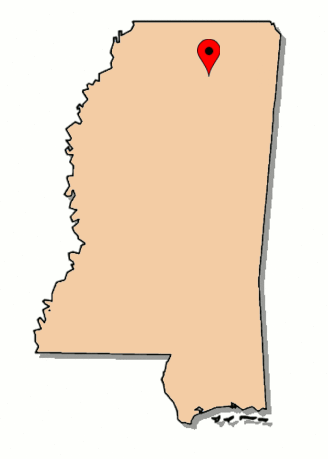
 he Tanglefoot Trail is a 44-mile walking and biking trail located in northeastern Mississippi. The asphalt rails-to-trails conversion — the longest in the state, spanning three counties — begins in downtown New Albany and runs southward as far as Houston, Mississippi. The entire path is former Gulf Mobile & Northern Railroad right-of-way, once a part of its mainline from Mobile, Alabama, to Jackson, Tennessee, and interchange points northward. GM&N would combine with the Mobile & Ohio to form the Gulf, Mobile & Ohio, which used this segment as a mainline as well. GM&O would be absorbed into the Illinois Central Gulf in 1972. The New Albany to Houston section remained in rail service as secondary through the ICG era, subsequently operating as a branch line as far south as Woodland under regionals Gulf & Mississippi and then MidSouth RailCorp. Successor Kansas City Southern sold off the branch to shortline Mississippi Tennessee Railnet, which in 2003 gave notice of its intent to abandon south of New Albany to Houston. Online communities came together in an effort to convert the abandoned right of way into a paved trail. Thanks to various funding sources, work was completed in the fall of 2013. The trail was designated as a National Recreation Trail in 2015. The route runs 43.6 miles at no more than a 1% grade, passing through 5 communities along the way. North of New Albany, the form GM&N mainline is operated by Pioneer Lines' Ripley & New Albany Railroad as far north as Ripley.
he Tanglefoot Trail is a 44-mile walking and biking trail located in northeastern Mississippi. The asphalt rails-to-trails conversion — the longest in the state, spanning three counties — begins in downtown New Albany and runs southward as far as Houston, Mississippi. The entire path is former Gulf Mobile & Northern Railroad right-of-way, once a part of its mainline from Mobile, Alabama, to Jackson, Tennessee, and interchange points northward. GM&N would combine with the Mobile & Ohio to form the Gulf, Mobile & Ohio, which used this segment as a mainline as well. GM&O would be absorbed into the Illinois Central Gulf in 1972. The New Albany to Houston section remained in rail service as secondary through the ICG era, subsequently operating as a branch line as far south as Woodland under regionals Gulf & Mississippi and then MidSouth RailCorp. Successor Kansas City Southern sold off the branch to shortline Mississippi Tennessee Railnet, which in 2003 gave notice of its intent to abandon south of New Albany to Houston. Online communities came together in an effort to convert the abandoned right of way into a paved trail. Thanks to various funding sources, work was completed in the fall of 2013. The trail was designated as a National Recreation Trail in 2015. The route runs 43.6 miles at no more than a 1% grade, passing through 5 communities along the way. North of New Albany, the form GM&N mainline is operated by Pioneer Lines' Ripley & New Albany Railroad as far north as Ripley.
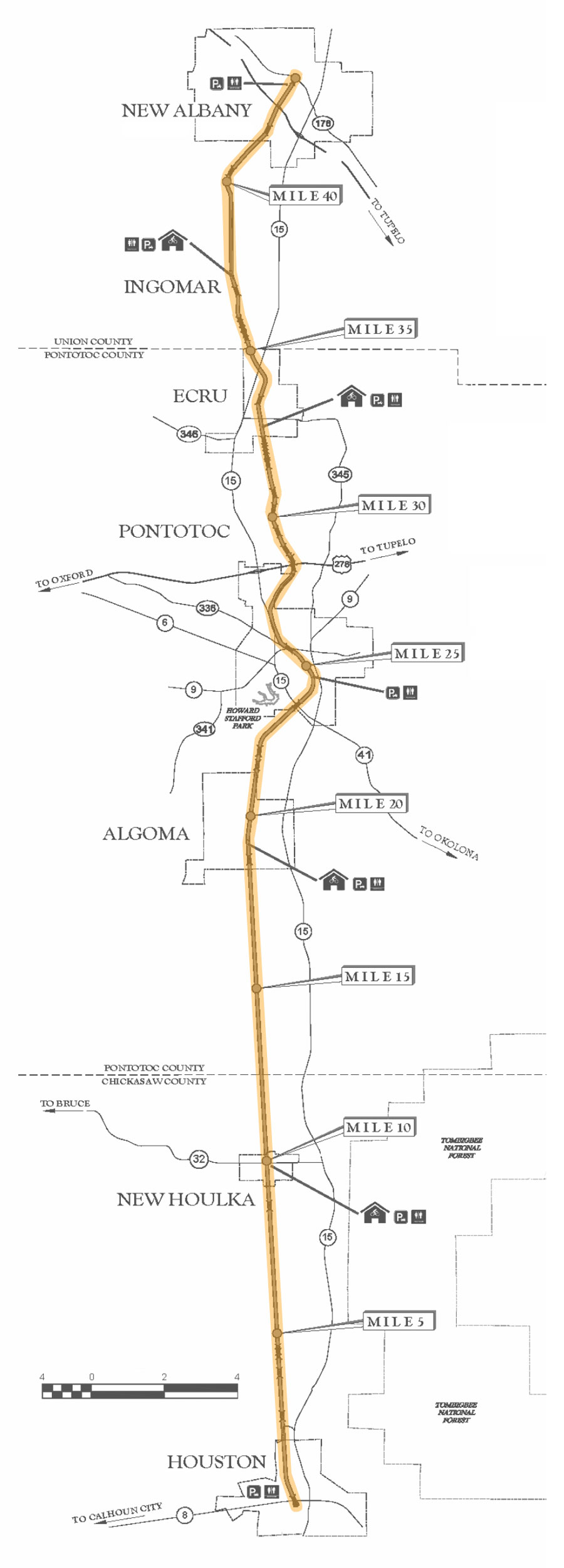
Tanglefoot trail map / RWH adaptation

Tanglefoot regional map / RWH
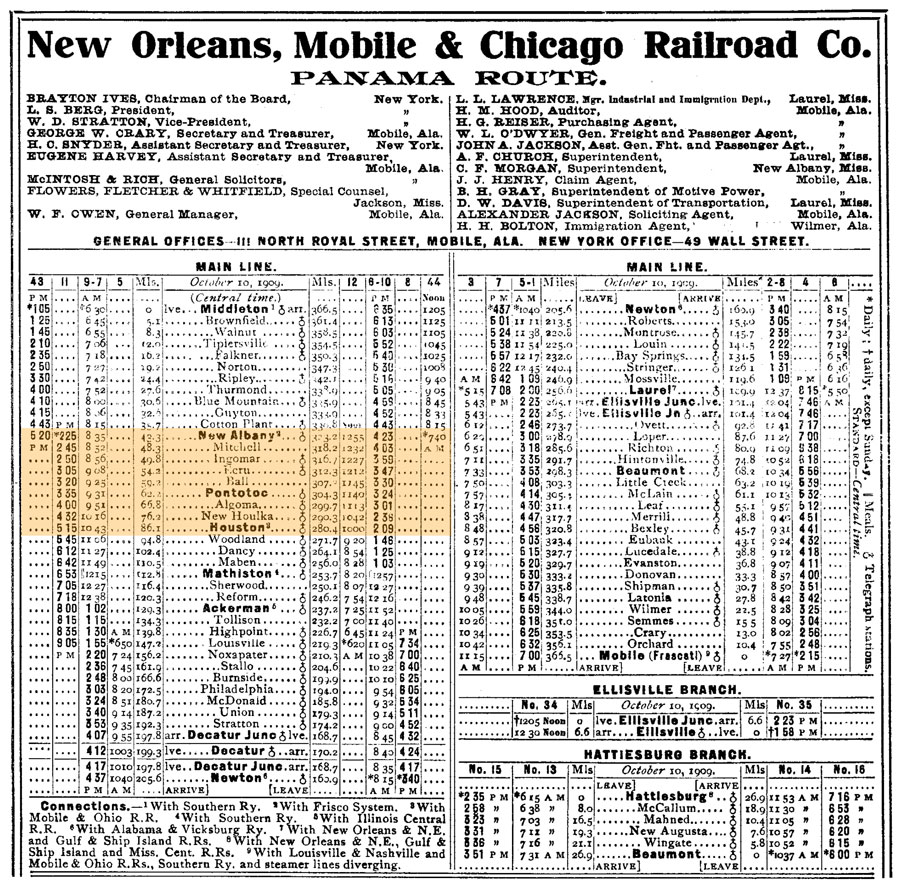
1910 Official Guide ad / collection
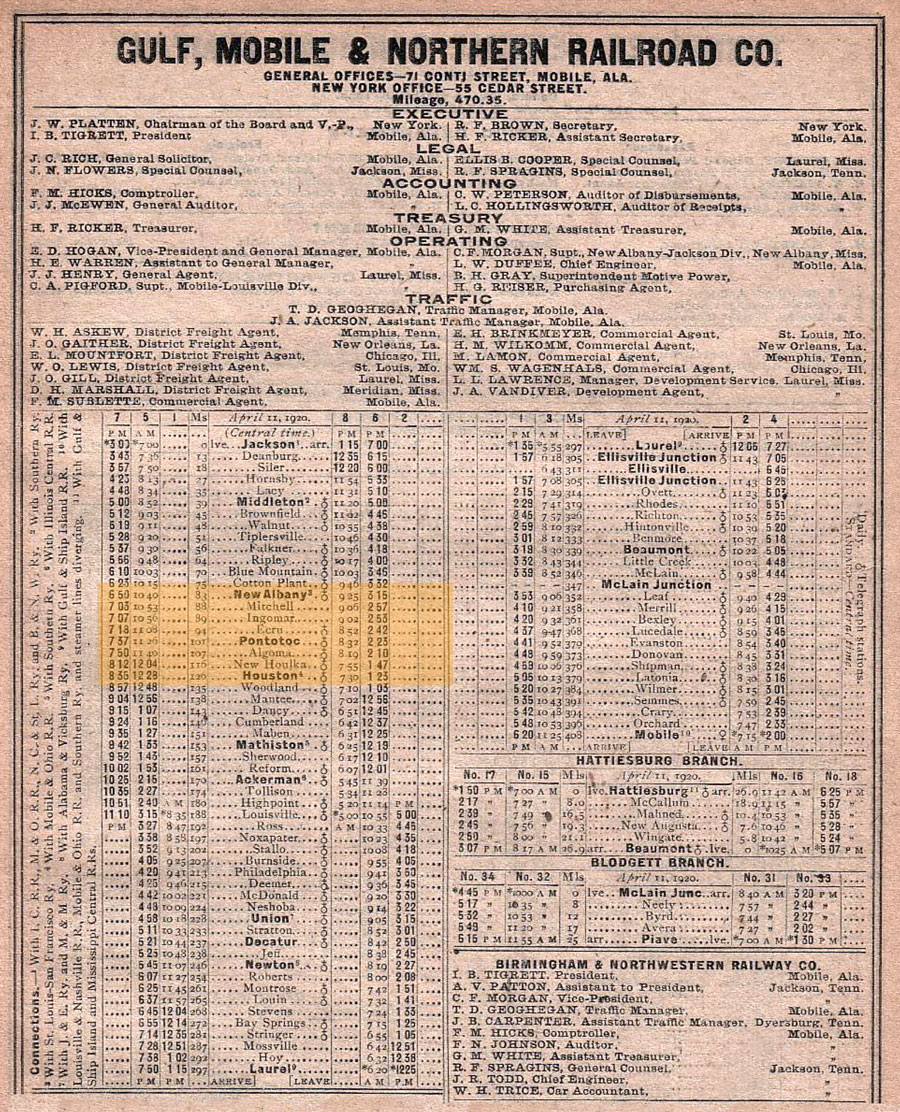
1920 Official Guide ad / collection
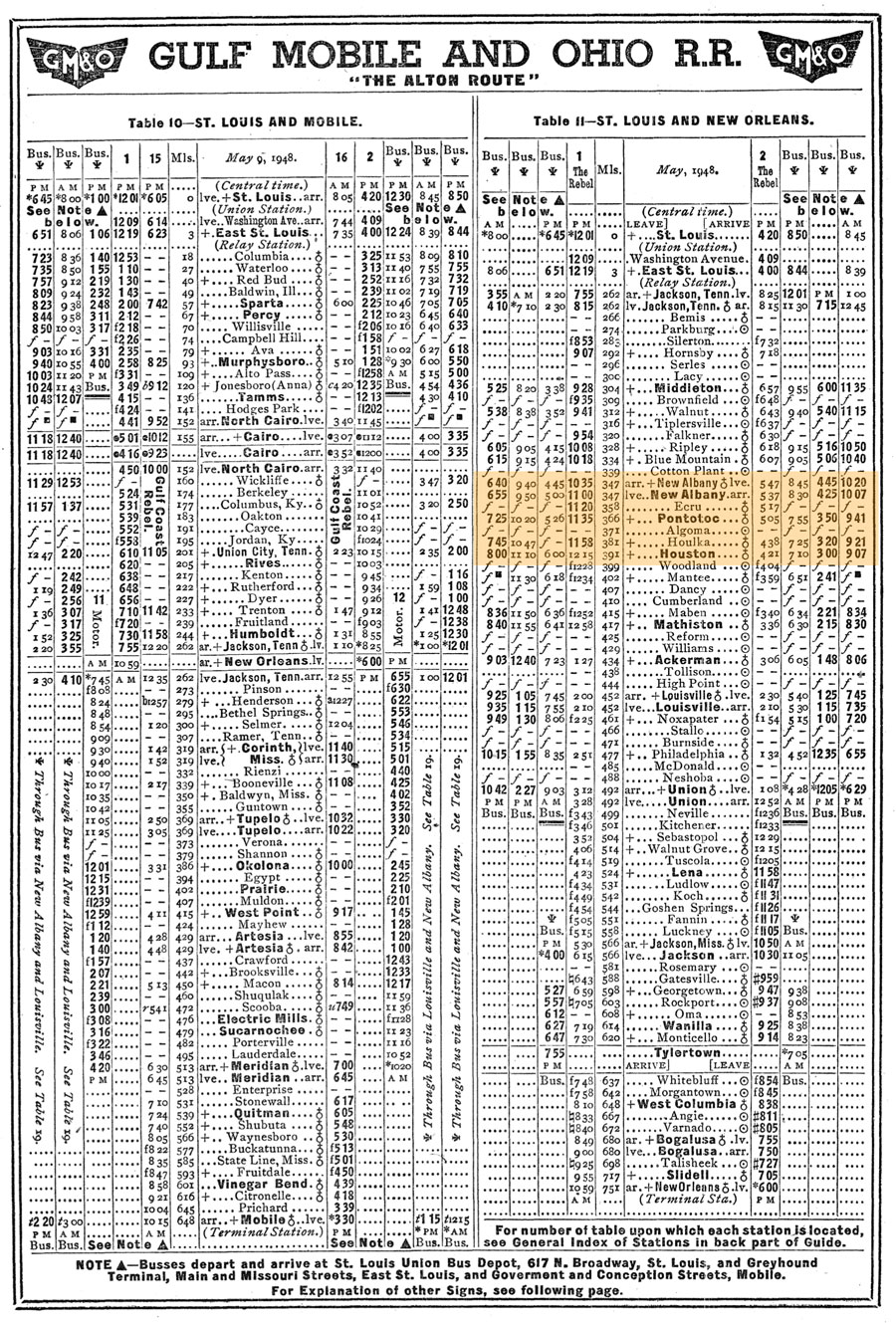
1948 Official Guide ad / collection
 New Albany trailhead
New Albany trailhead

collection
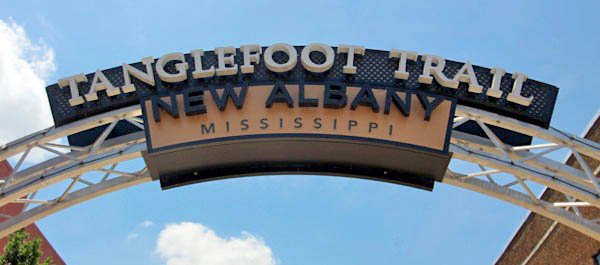
Jun 2020 RWH
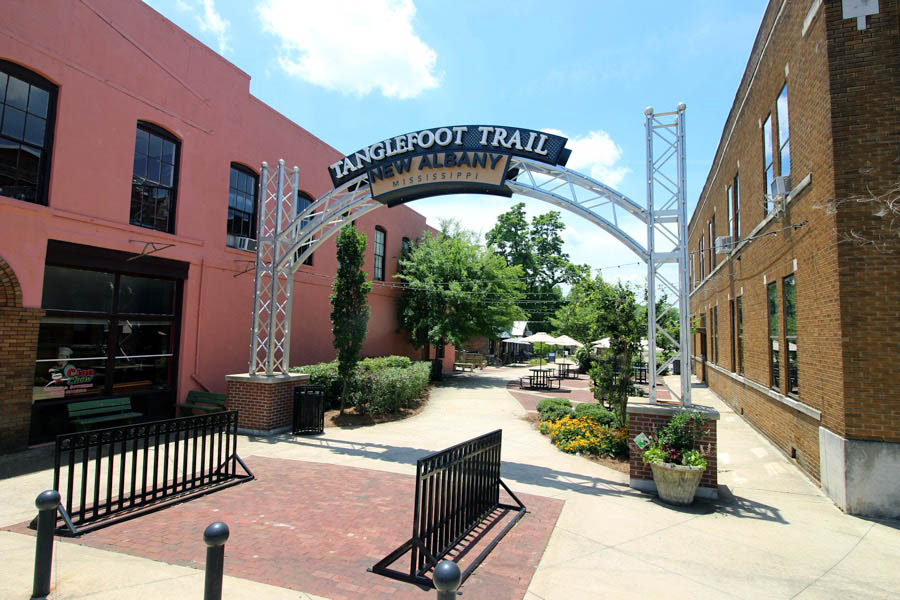
New Albany, Ms / Jun 2020 / RWH

Click to see the New Albany trailhead plotted on a Google Maps page
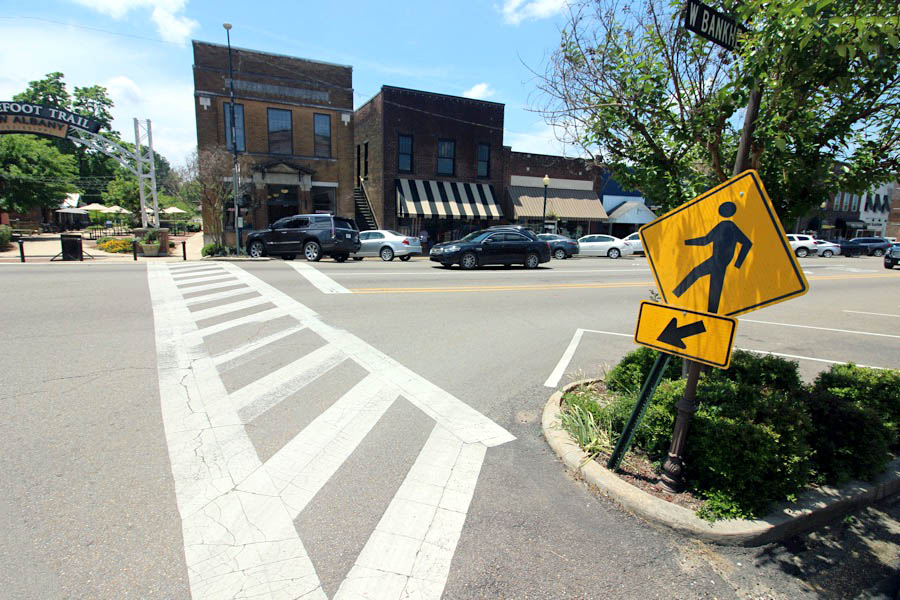
New Albany, Ms / Jun 2020 / RWH

New Albany, Ms / Jun 2020 / RWH
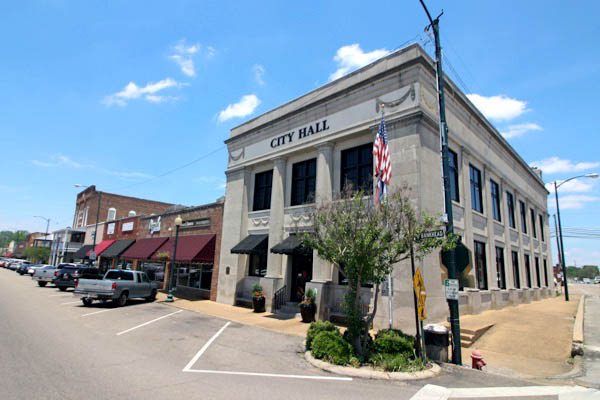
New Albany, Ms / Jun 2020 / RWH

Nestled in the rolling hills of North Mississippi and just an hour south of Memphis, the city of New Albany, Mississippi is a charming little city known for its vibrant downtown, antique stores, and friendly people. People have been coming here for years to shop at ourboutiques, antique shops, jewelers, and specialty shops. The city's convenient location and picturesque placement on the Tallahatchie River make it an ideal destination for a day trip, a weekend trip or as a possible home. As well, the city is quickly becoming renowned for its active, healthy environment. We hope you'll take a moment and explore our website and then we hope you'll take a day or two and come explore our town. We hope to see you soon!
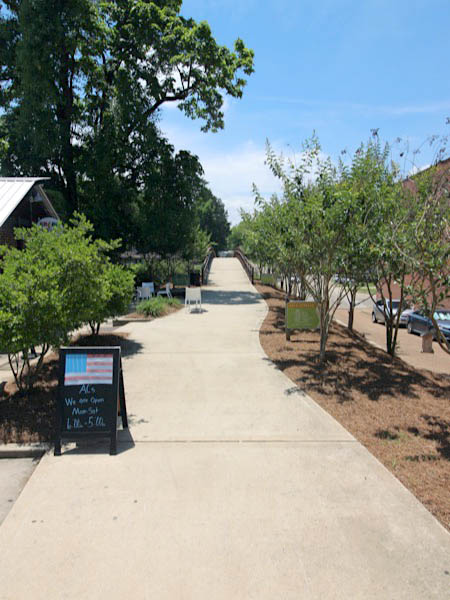
Jun 2020 / RWH

New Albany, Ms / Jun 2020 / RWH

New Albany, Ms / Jun 2020 / RWH
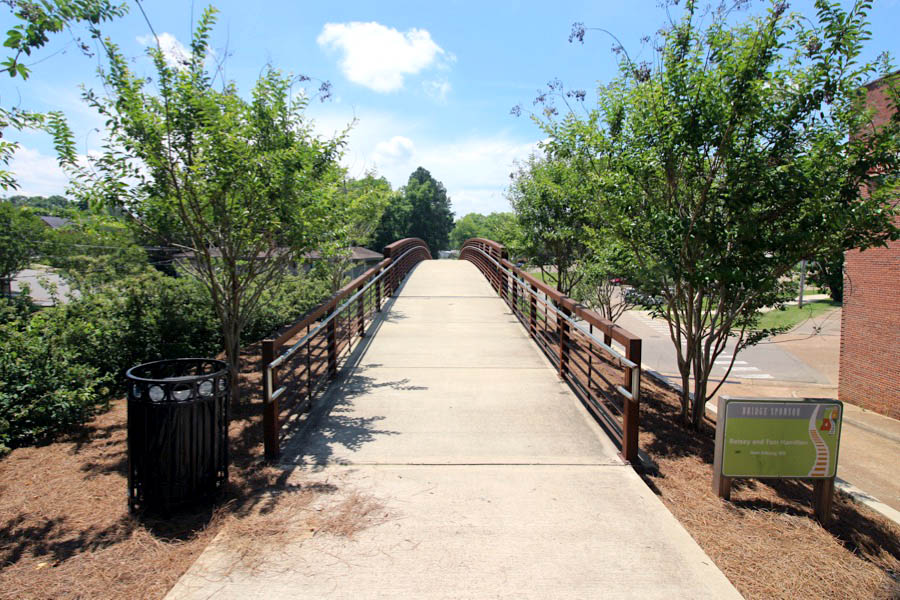
New Albany, Ms / Jun 2020 / RWH

Jun 2020 / RWH
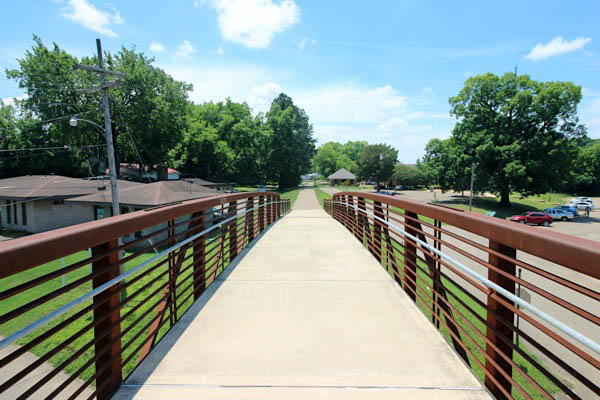
New Albany, Ms / Jun 2020 / RWH
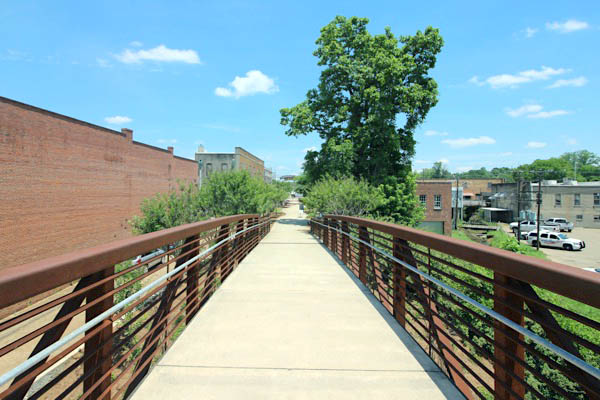
New Albany, Ms / Jun 2020 / RWH
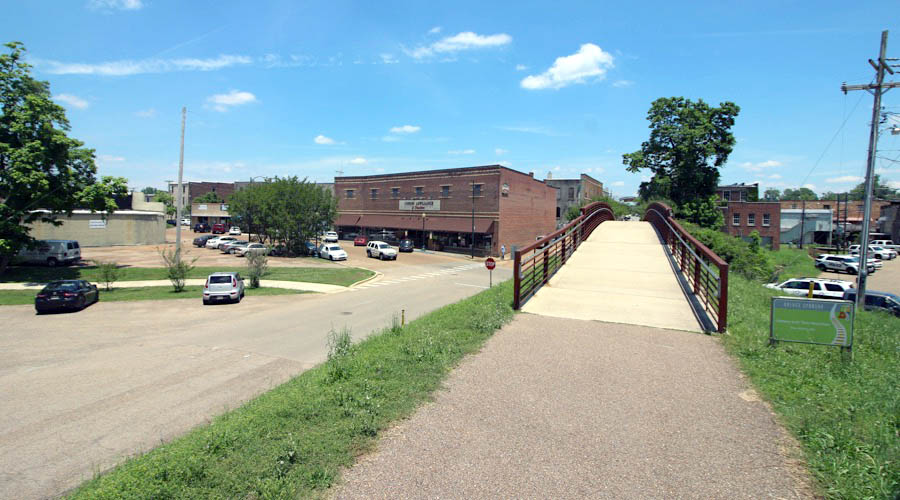
New Albany, Ms / Jun 2020 / RWH
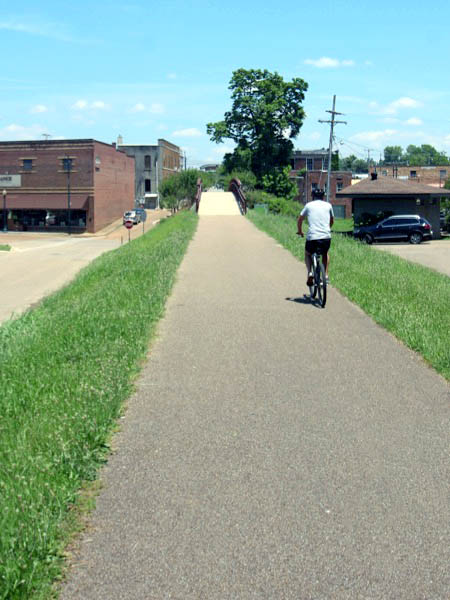
Jun 2020 / RWH
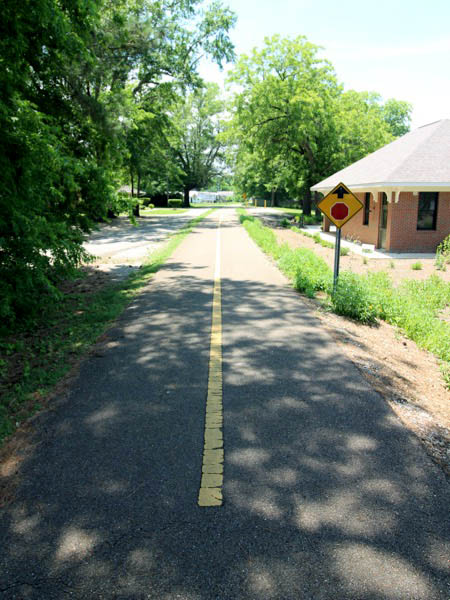
Jun 2020 / RWH
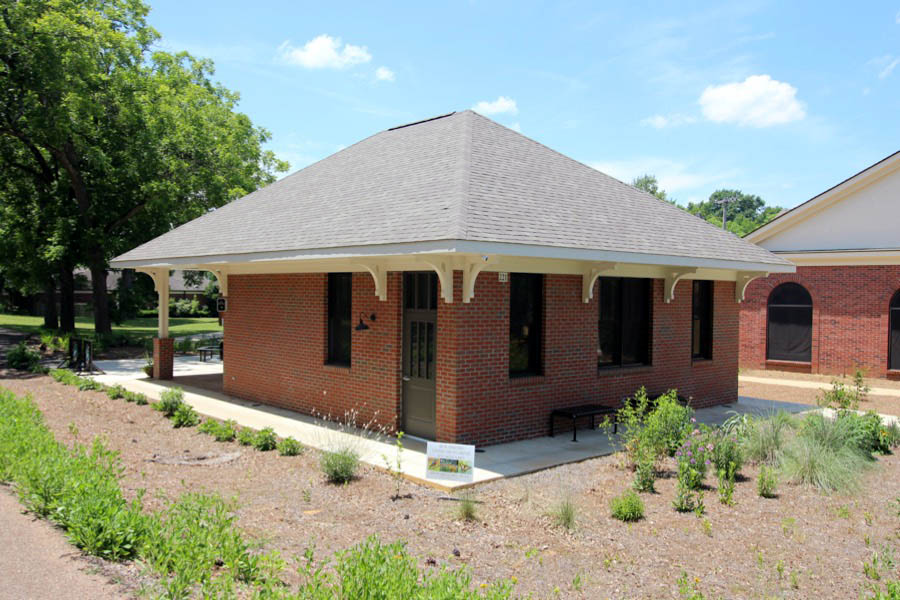
New Albany, Ms / Jun 2020 / RWH

Click to see the New Albany trail shelter plotted on a Google Maps page

Established in 1890 along the banks of the Tallahatchie River, New Albany is the birthplace of the 20th century’s greatest American novelist, William Faulkner. It was Faulkner’s great-grandfather, Col. William. C. Falkner, who built the Gulf & Ship Island Railroad along the right-of-way which the Tanglefoot Trail follows.

Jun 2020 / RWH
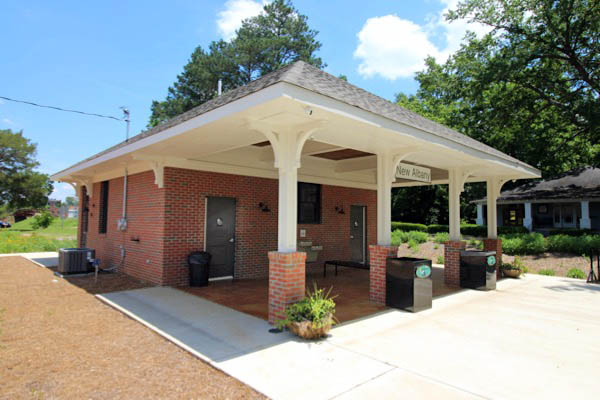
New Albany, Ms / Jun 2020 / RWH
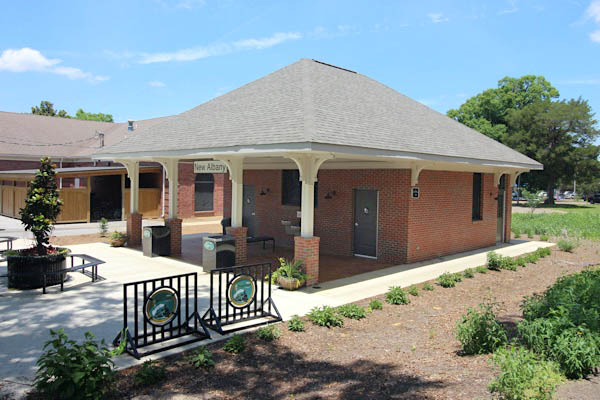
New Albany, Ms / Jun 2020 / RWH
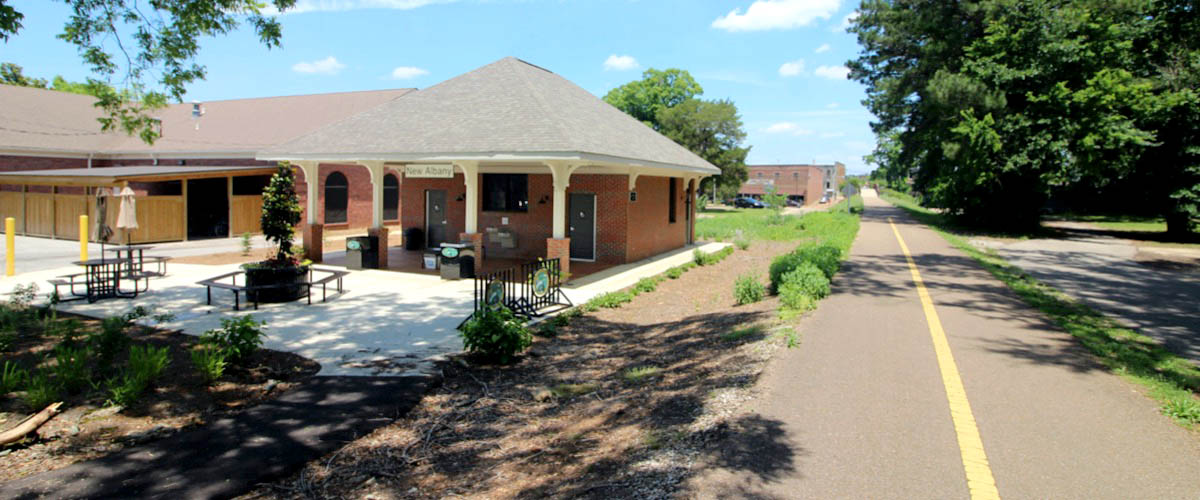
New Albany, Ms / Jun 2020 / RWH
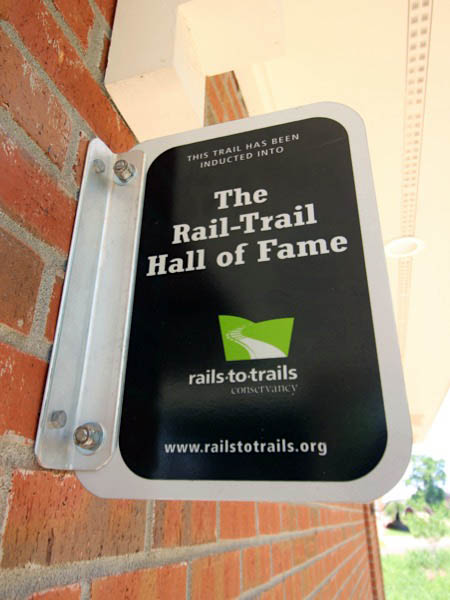
Jun 2020 / RWH
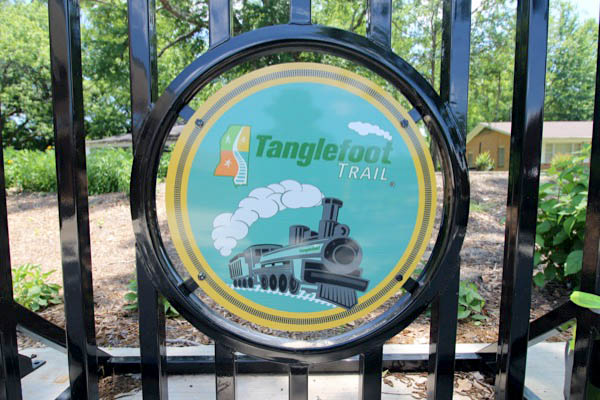
Jun 2020 / RWH
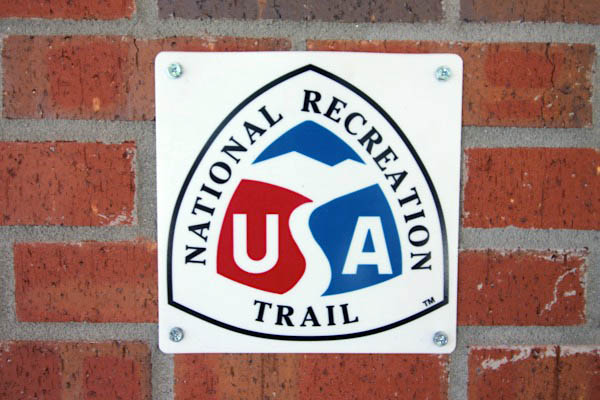
Jun 2020 / RWH
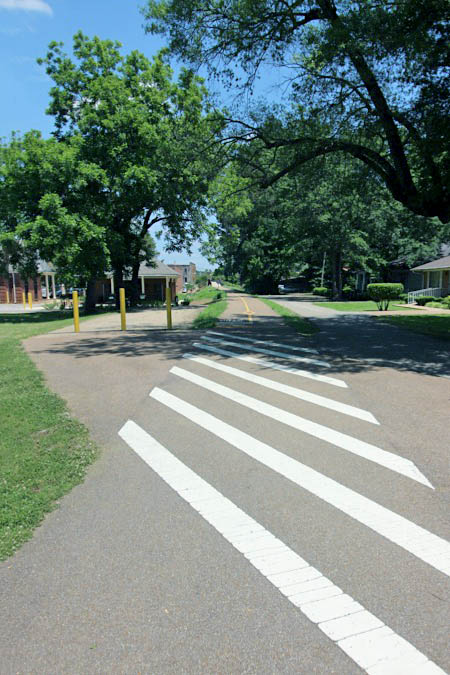
Jun 2020 / RWH
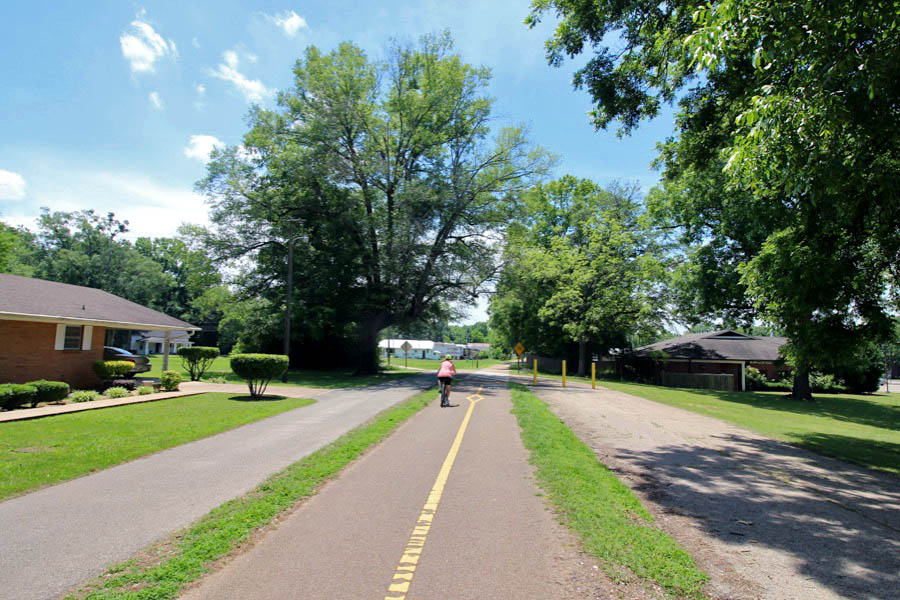
New Albany, Ms / Jun 2020 / RWH
 GM&N mainline
GM&N mainline
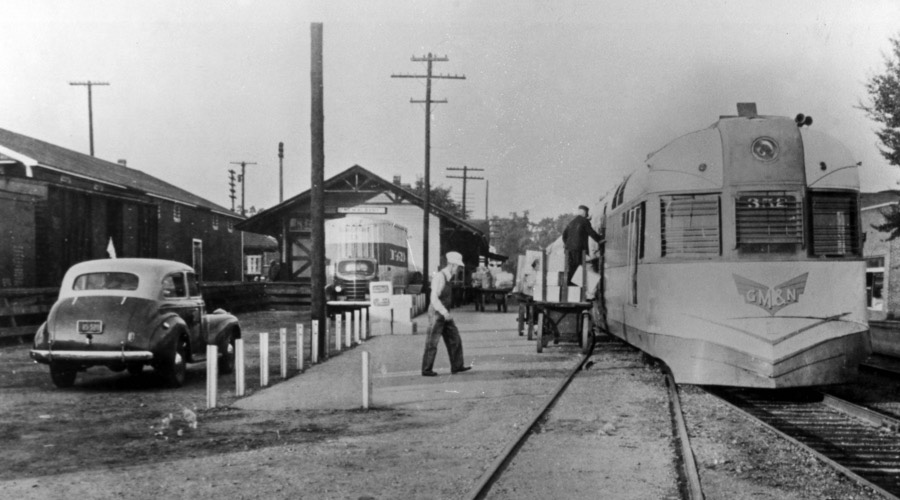
New Albany, Ms / collection
 outh of Bankhead Street in downtown New Albany, Mississippi, the Tanglefoot Trail follows the former Gulf Mobile & Northern right of way southward out of town. North of Bankhead Street, near the trailhead arch downtown, remnants of rail can still be found in Railroad Avenue along the GM&N alignment. This track was last used by shortline Mississippi Tennessee Railroad. One block north of the trailhead arch is the Burlington Northern Santa Fe mainline (former Burlington Northern < Frisco). North of that location is the yard area for current shortline Ripley & New Albany Railroad, whose 27-mile trackage to the north of New Albany is the last GM&N mainline in operation in upper Mississippi.
outh of Bankhead Street in downtown New Albany, Mississippi, the Tanglefoot Trail follows the former Gulf Mobile & Northern right of way southward out of town. North of Bankhead Street, near the trailhead arch downtown, remnants of rail can still be found in Railroad Avenue along the GM&N alignment. This track was last used by shortline Mississippi Tennessee Railroad. One block north of the trailhead arch is the Burlington Northern Santa Fe mainline (former Burlington Northern < Frisco). North of that location is the yard area for current shortline Ripley & New Albany Railroad, whose 27-mile trackage to the north of New Albany is the last GM&N mainline in operation in upper Mississippi.

southbound / Jun 2020 / RWH

northbound / New Albany, Ms / Jun 2020 / RWH

southbound / New Albany, Ms / Jun 2020 / RWH

southbound / Jun 2020 / RWH

northbound / New Albany, Ms / Jun 2020 / RWH

northbound / New Albany, Ms / Jun 2020 / RWH

See also our complete Ripley & New Albany Railroad scrapbook in Shortlines
 Ingomar
Ingomar

Jun 2020 / RWH
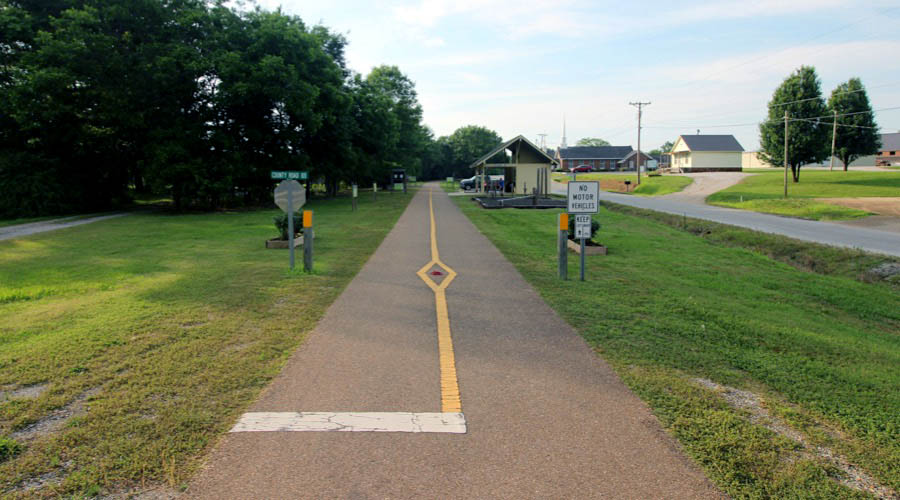
Ingomar, Ms / Jun 2020 / RWH

Click to see the Ingomar whistle stop plotted on a Google Maps page

This unincorporated community was named Ingomar after a fictional character in the book The White Rose of Memphis, penned by the builder of the railroad, old Colonel William C. Falkner, great-grandfather of the Nobel Prize winning author William C. Faulkner of later fame. Ingomar was the name of the fictional Chickasaw Chief in the novel. Interestingly, the real Chickasaw King, Ishtehotopah, lived within sight of the Chickasaw Trail which would become the railroad and today is the Tanglefoot Trail. Ingomar is a close knit community with a school, several churches, and beautiful countryside.

Ingomar, Ms / Jun 2020 / RWH

Ingomar, Ms / Jun 2020 / RWH
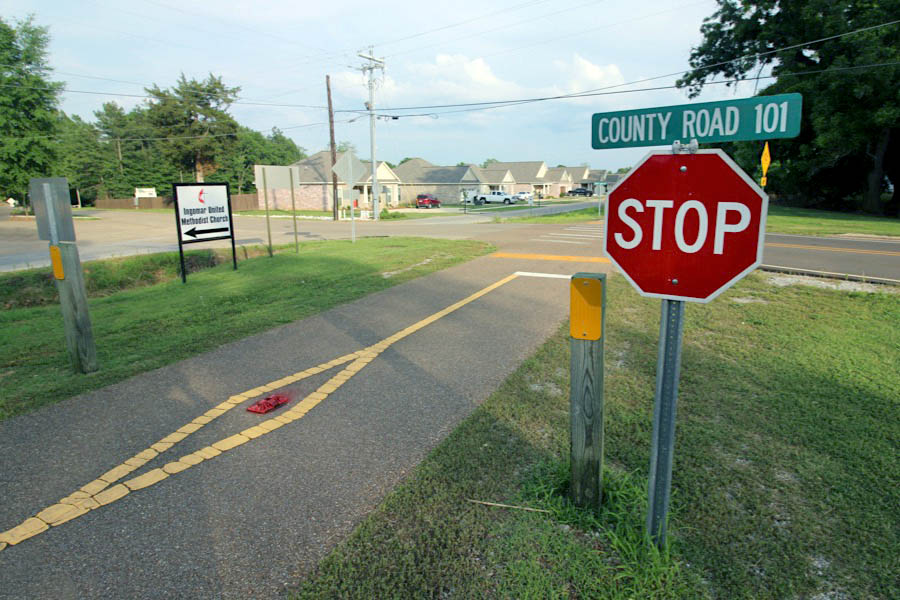
Ingomar, Ms / Jun 2020 / RWH
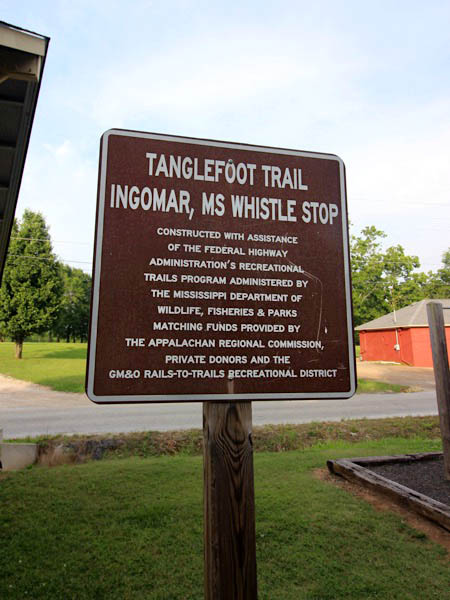
Jun 2020 / RWH
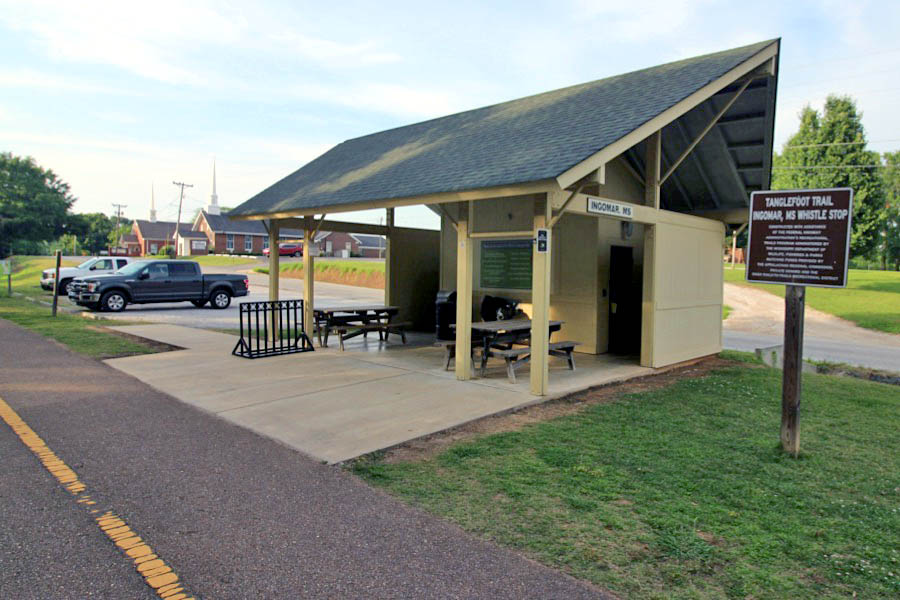
Ingomar, Ms / Jun 2020 / RWH
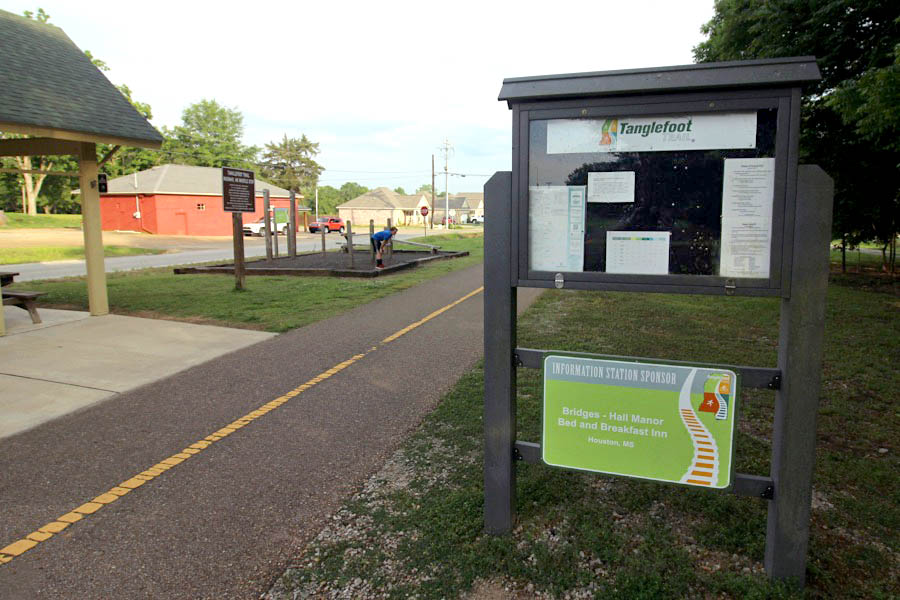
Ingomar, Ms / Jun 2020 / RWH
 Ecru
Ecru

Jun 2020 / RWH
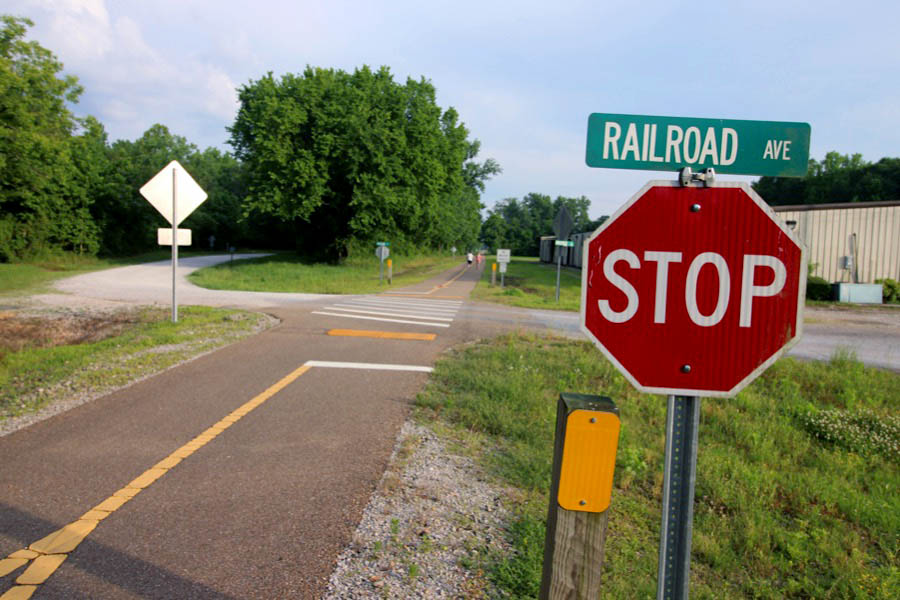
Ecru, Ms / Jun 2020 / RWH

The lone sound of a steam-run train whistle marked the beginning of the little village of Ecru with much excitement. The first official train ran through the town on July 4, 1888. After Falkner’s railroad was established, residents from Cherry Creek and other nearby communities began to migrate to Ecru. When the U.S. postal system established a post office and needed a name, "Ecru" was chosen as a result of the ecru color of the town’s depot. Today the town proclaims to be the “Biggest Little Town” in north Mississippi.
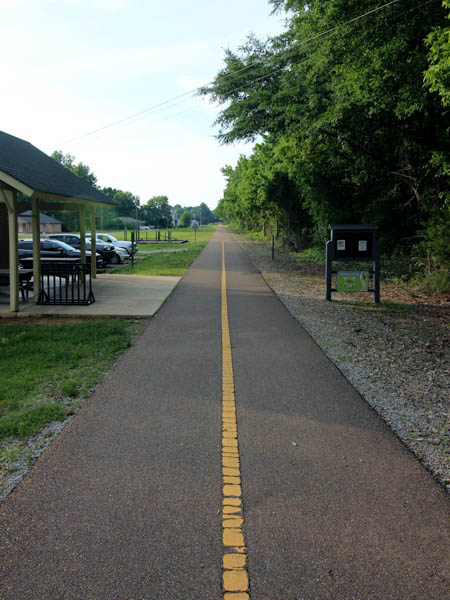
Jun 2020 / RWH
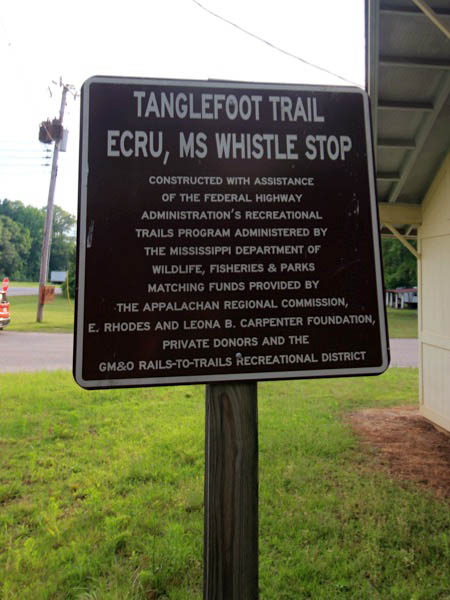
Jun 2020 / RWH
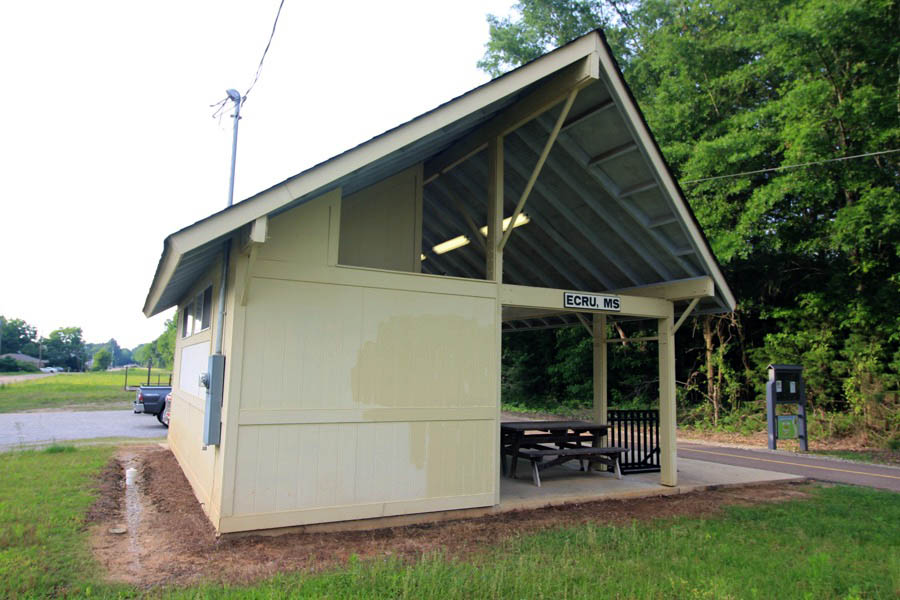
Ecru, Ms / Jun 2020 / RWH

Click to see the Ecru whistle stop plotted on a Google Maps page
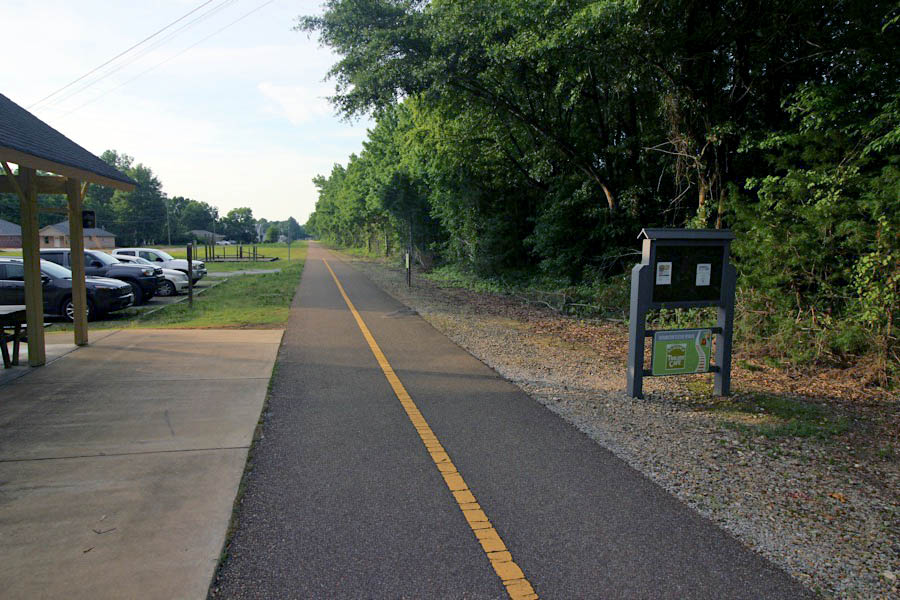
Ecru, Ms / Jun 2020 / RWH
 Pontotoc
Pontotoc
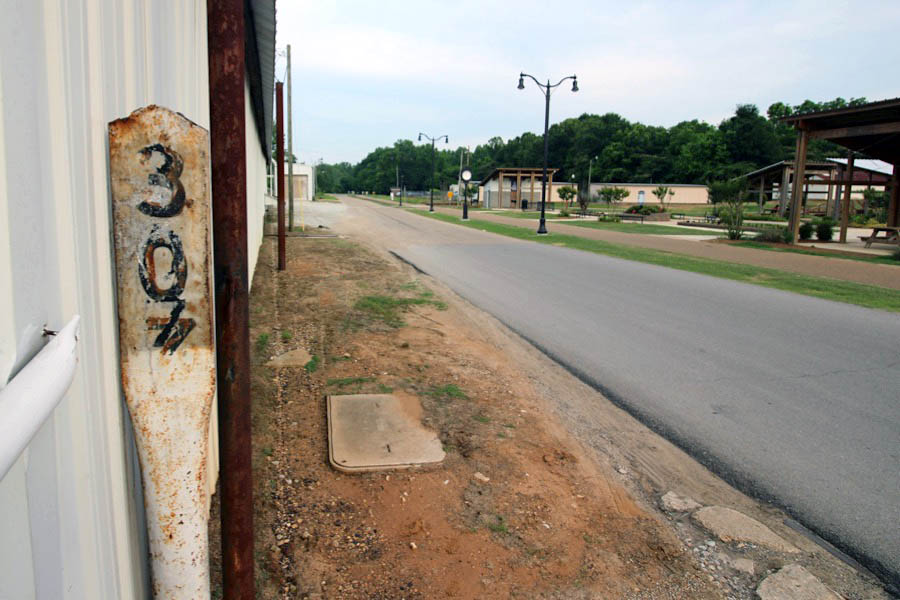
Pontotoc, Ms / Jun 2020 / RWH
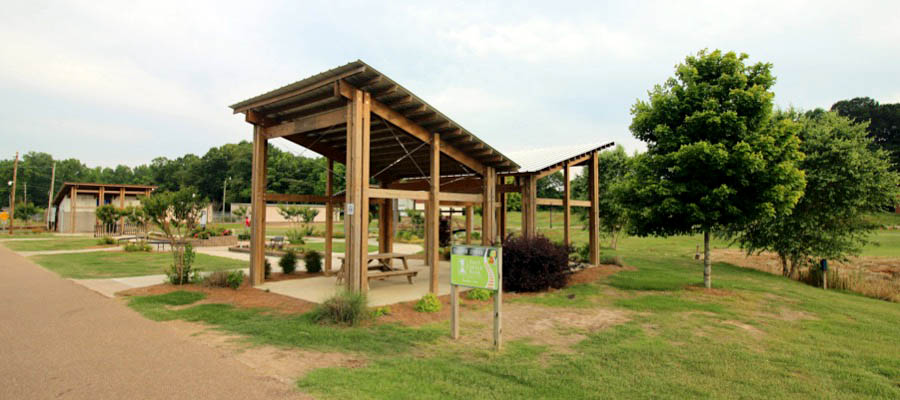
Pontotoc, Ms / Jun 2020 / RWH

collection
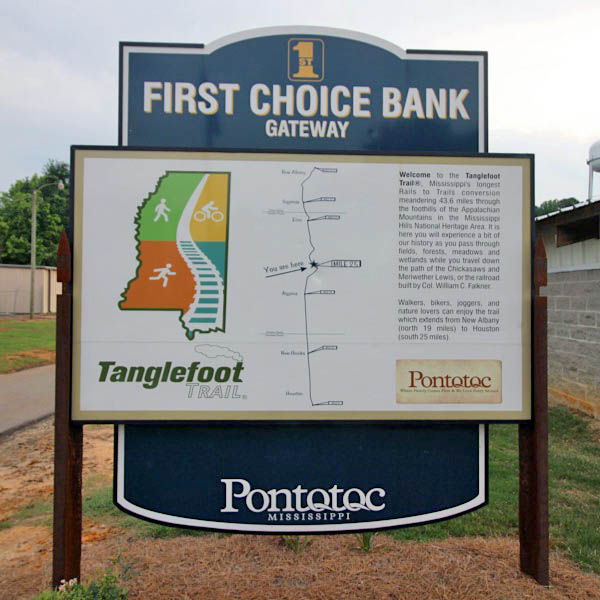
Jun 2020 / RWH

Click to see the Pontotoc gateway park plotted on a Google Maps page

Pontotoc developed on hunting grounds ceded by the Chickasaw Indians at the Treaty of Pontotoc Creek in 1832. Its name is translated from the Chickasaw language as land of the hanging grapes. The land for the town, incorporated in 1836, was given by Thomas C. McMackin and his wife Lucinda. The community built up around the public square a few blocks up the hill from the Tanglefoot Trail. There was great excitement when Falkner’s railroad reached Pontotoc in 1888. Thousands of citizens came to town on July 4th to watch the "driving of the silver spike" in celebration of the event.
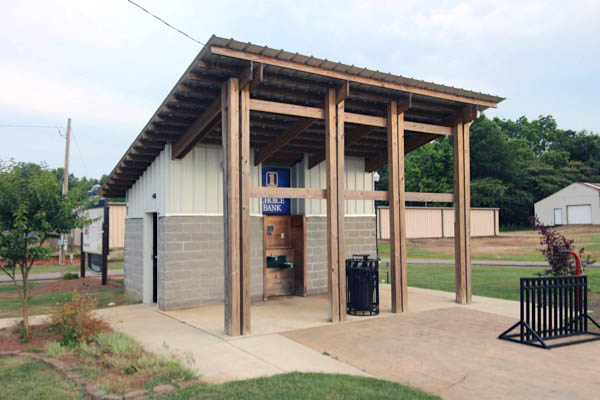
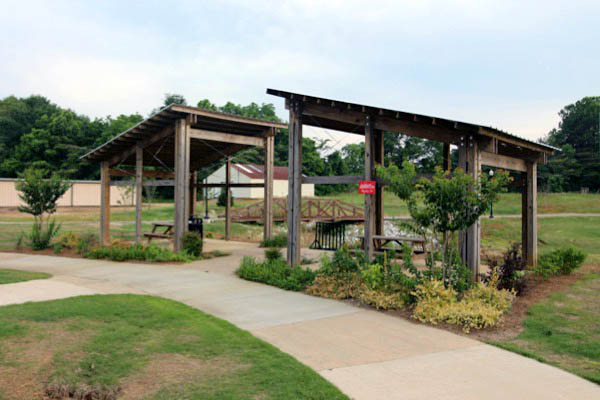
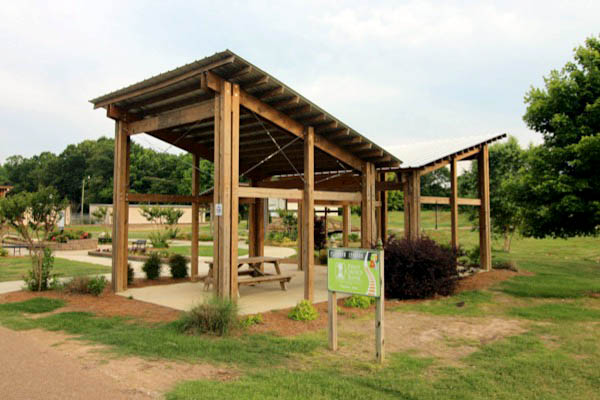
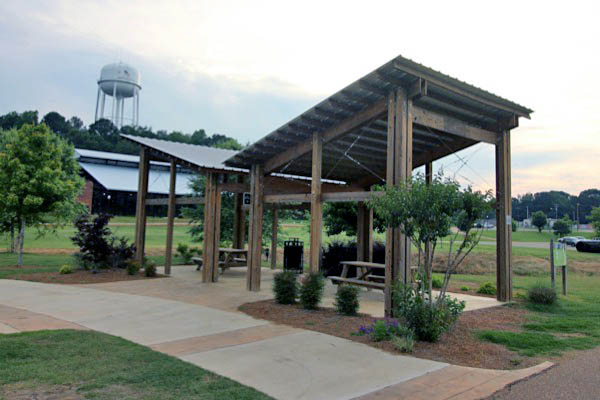
Pontotoc, Ms / Jun 2020 / RWH
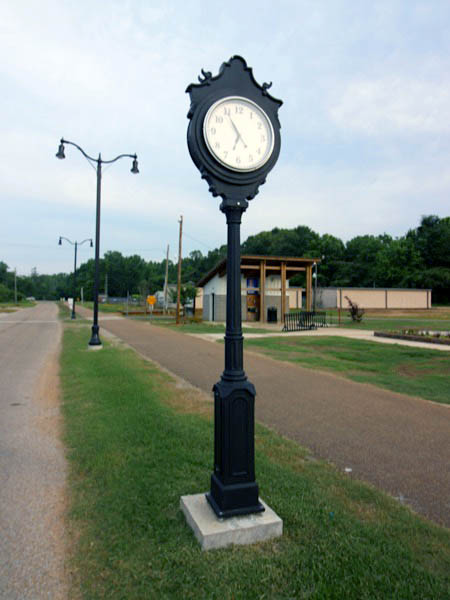
Pontotoc, Ms / Jun 2020 / RWH
"Pontotoc" is a Chickasaw word meaning "Land of Hanging Grapes". The Chickasaw nation occupied this area long before Europeans colonized the Southeast, the last in a succession of indigenous peoples who had this territory for thousands of years. In the early 1830s they were forced to Indian Territory west of the Mississippi River through the federal program of Indian removal. In the late 19th century, the outlaws Jesse and Frank James and their gang came into this area. They once hid at an old house that had been used as a Union Army hospital during the Battle of Harrisburg or Battle of Tupelo in the Civil War. The house was located at a crossroad in east Pontotoc County, near the Lee County line.
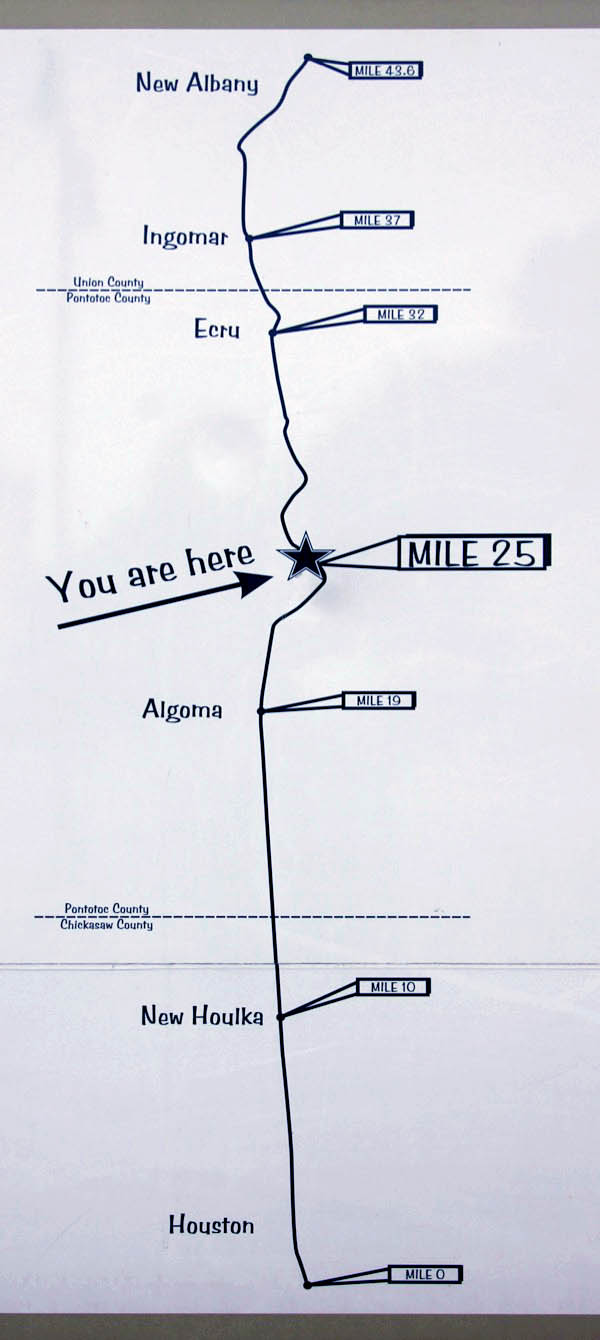
Jun 2020 / RWH

Pontotoc, Ms / Jun 2020 / RWH
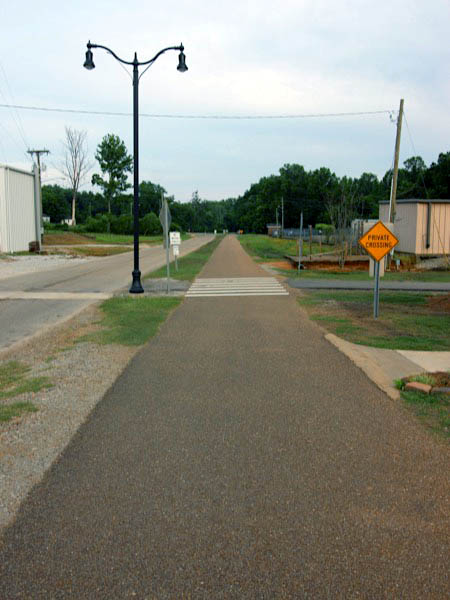
Jun 2020 / RWH

Jun 2020 / RWH
 Shipper Spotlight: Reeder Farm Supply
Shipper Spotlight: Reeder Farm Supply
Visible in the 2004 photo above is the distribution tower for Reeder Farm Supply in Pontotoc. Evidence of rail service still existed in 2020 alongside the loading dock and storerooms of the classic feed and seed facility. The former rail shipper is across the street from the Tanglefoot Trail shelters (above).
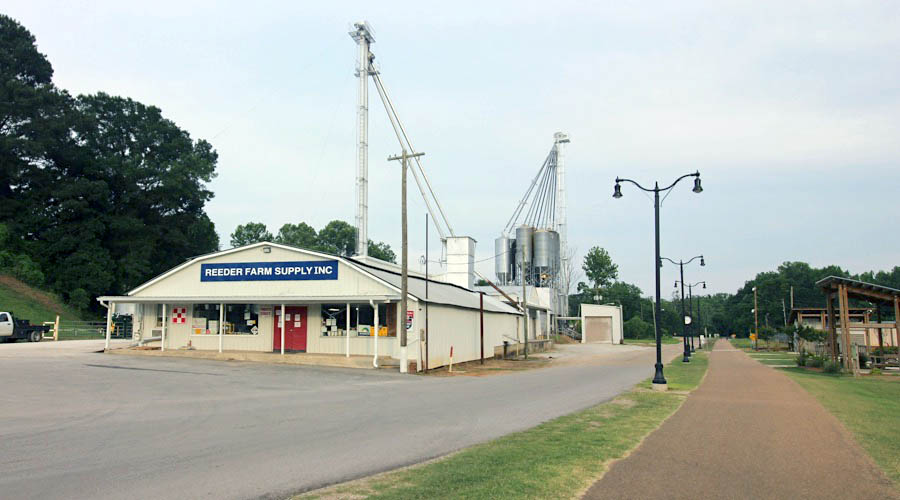
Pontotoc, Ms / Jun 2020 / RWH

Click to see the Reeder Farm Supply facility plotted on a Google Maps page

Jun 2020 / RWH

Pontotoc, Ms / Jun 2020 / RWH
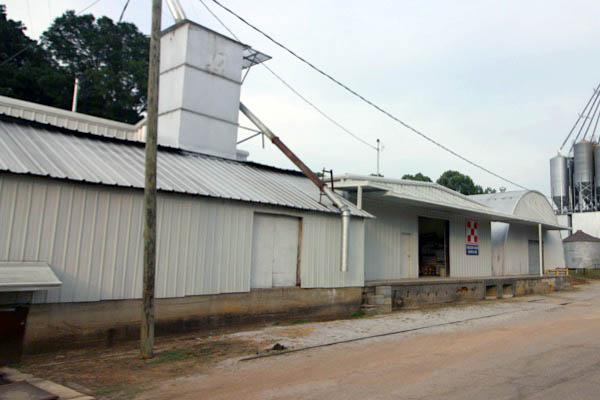
Pontotoc, Ms / Jun 2020 / RWH

Jun 2020 / RWH
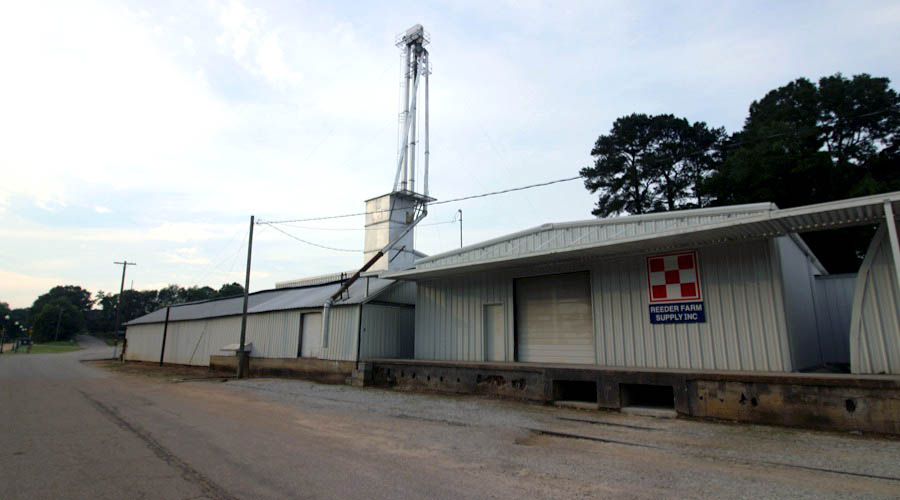
Pontotoc, Ms / Jun 2020 / RWH
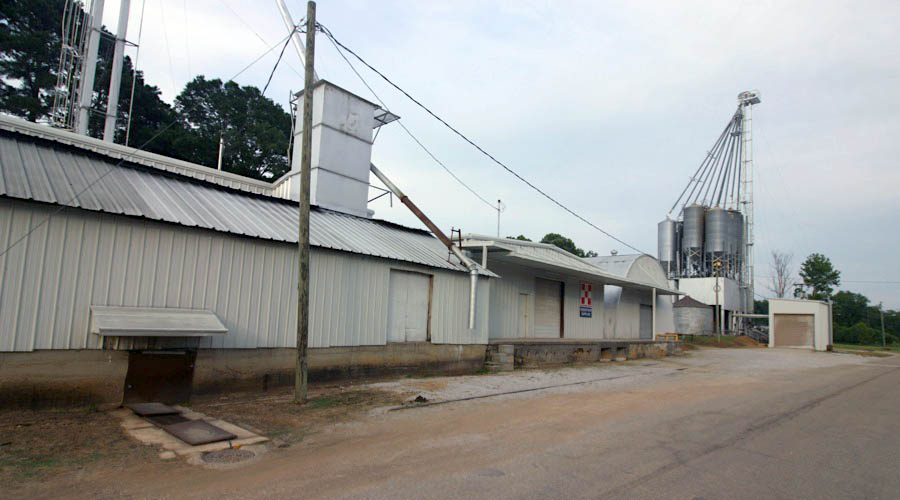
Pontotoc, Ms / Jun 2020 / RWH
 Algoma
Algoma
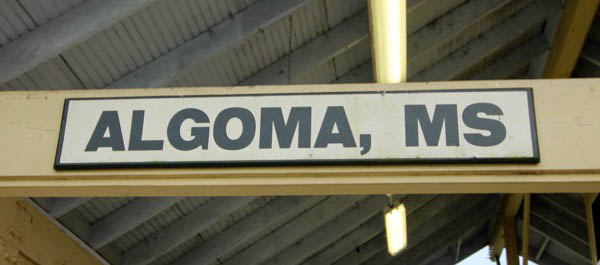
Jun 2020 / RWH

Algoma, Ms / Jun 2020 / RWH

Jun 2020 / RWH

Click to see the Algoma whistle stop plotted on a Google Maps page

Algoma, a Chickasaw word meaning “God abides” is the name first given to the community by a Presbyterian preacher named Savage. Settled in the 1830s the community was on an Indian Long Trail. After the Gulf & Chicago Railroad extended its line from Pontotoc, the community experienced growth due to the quantity of available timber and the H. W. Owen Tie Company. Algoma proclaimed to be the “Crosstie Capital" of the world. The community flourished until the town was hit by a tornado and timber was depleted.
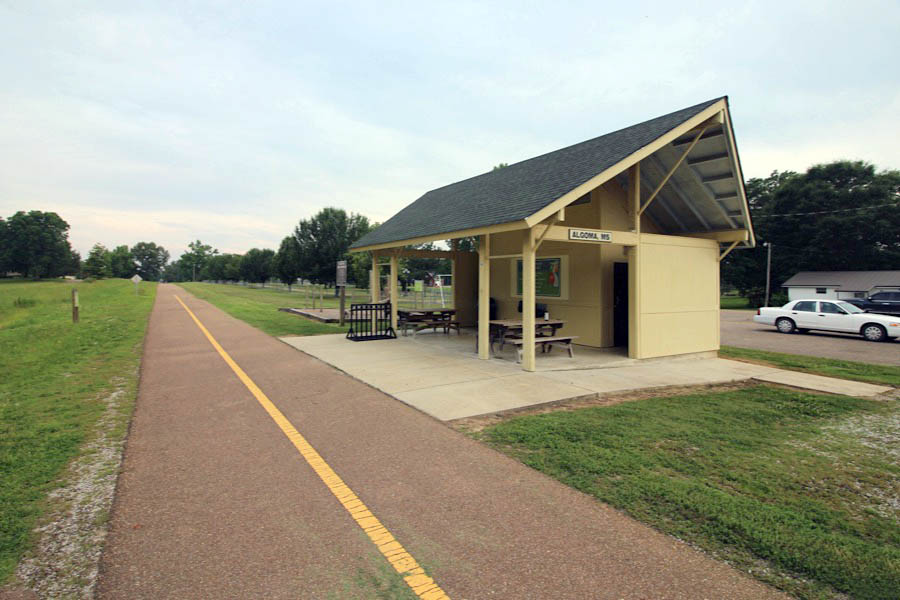
Algoma, Ms / Jun 2020 / RWH
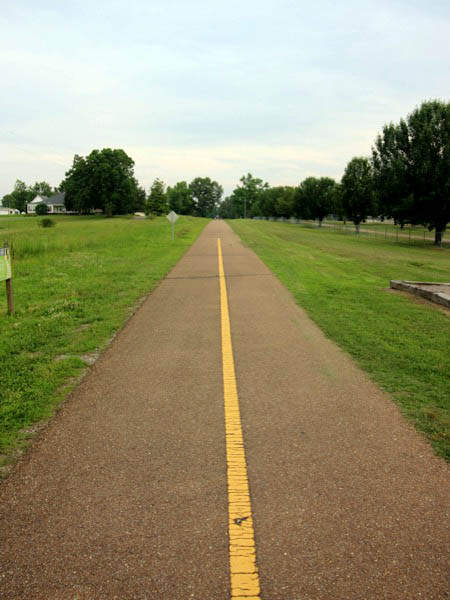
Jun 2020 / RWH
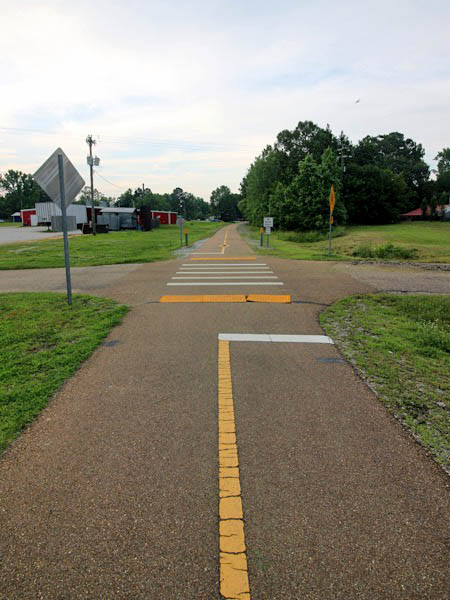
Jun 2020 / RWH
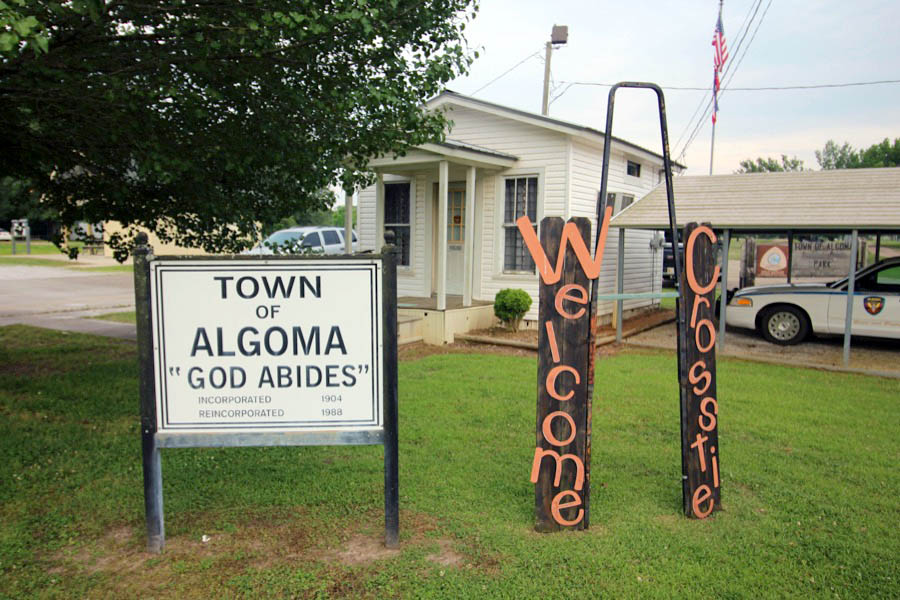
Algoma, Ms / Jun 2020 / RWH
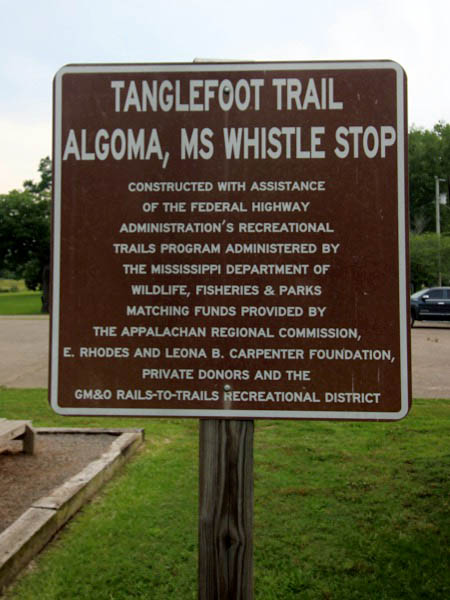
Jun 2020 / RWH
 New Houlka
New Houlka

Jun 2020 / RWH

collection
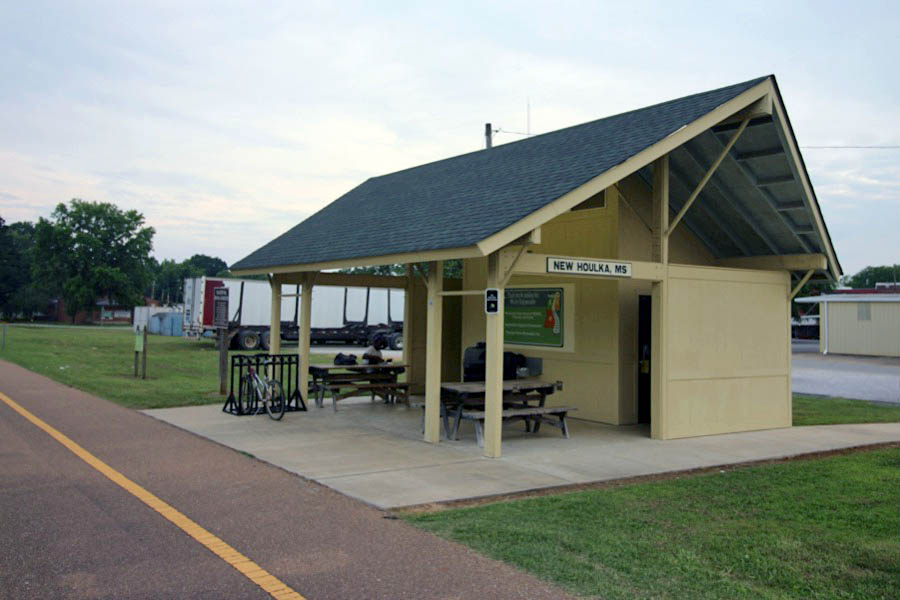
New Houlka, Ms / Jun 2020 / RWH
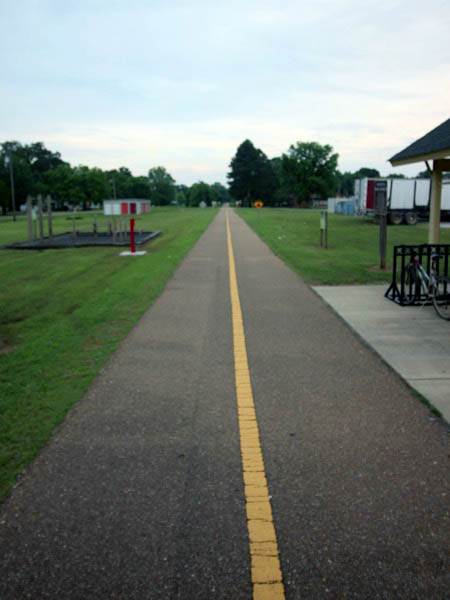
Jun 2020 / RWH
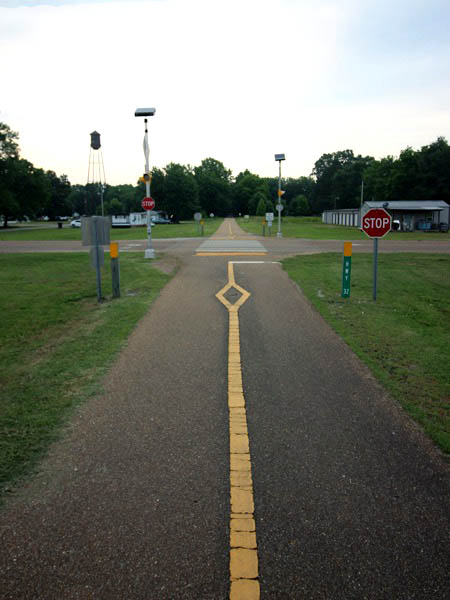
Jun 2020 / RWH

Click to see the New Houlka whistle stop plotted on a Google Maps page

New Houlka includes the older settlement of “Old Houlka”. Chickasaw County’s oldest town, the community was established in 1812 at the intersection of the Natchez Trace and Gaines Trace approximately one mile from the Chickasaw Indian Agency. With the coming of the Gulf, Mobile & Northern Railroad in 1905, the town moved from its original site approximately a mile to the west.
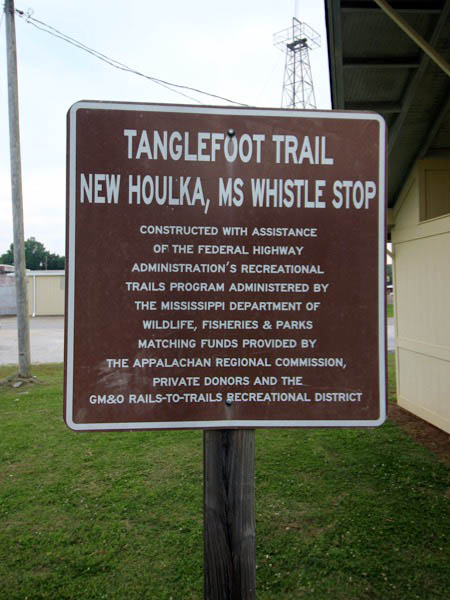
Jun 2020 / RWH
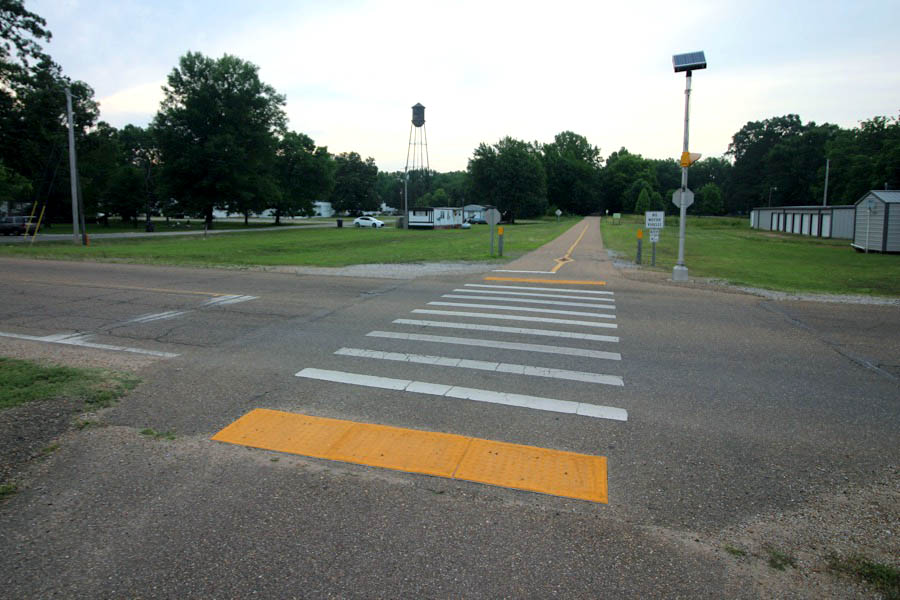
New Houlka, Ms / Jun 2020 / RWH
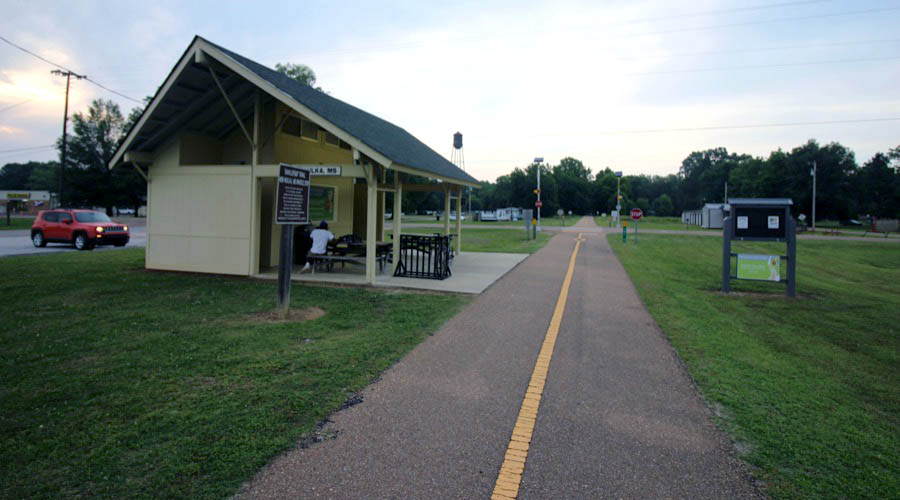
New Houlka, Ms / Jun 2020 / RWH
 Houston trailhead
Houston trailhead
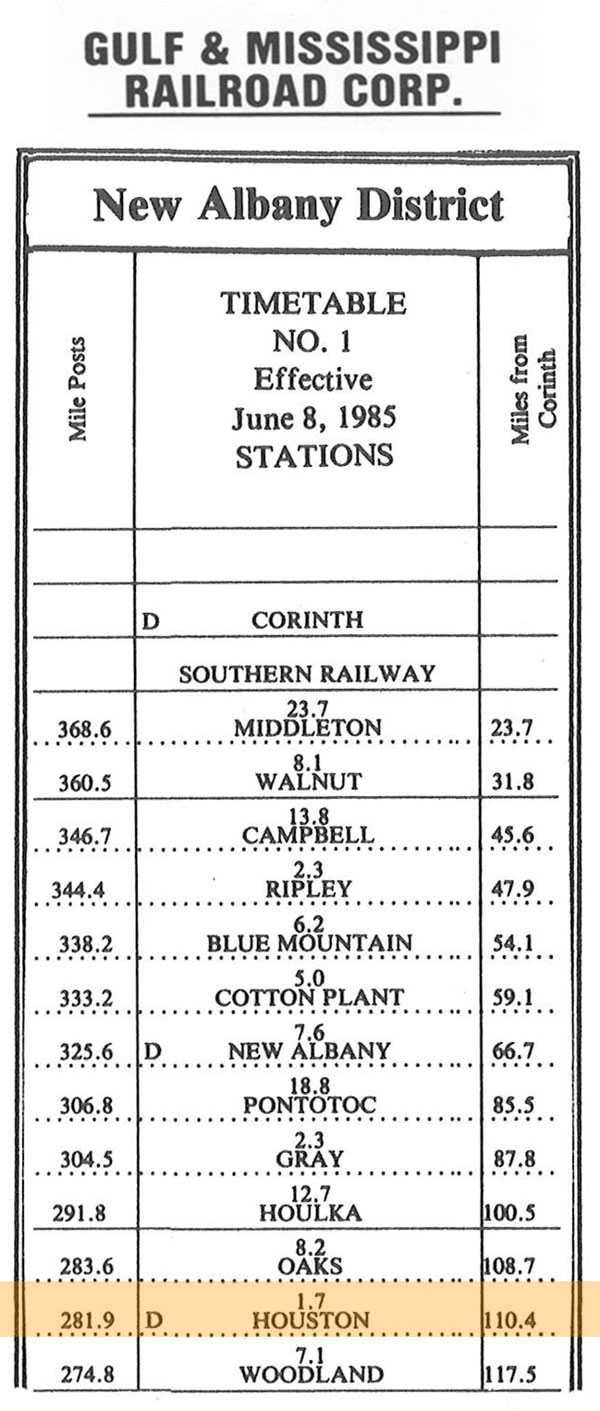
collection

Houston, Ms / Jun 2020 / RWH
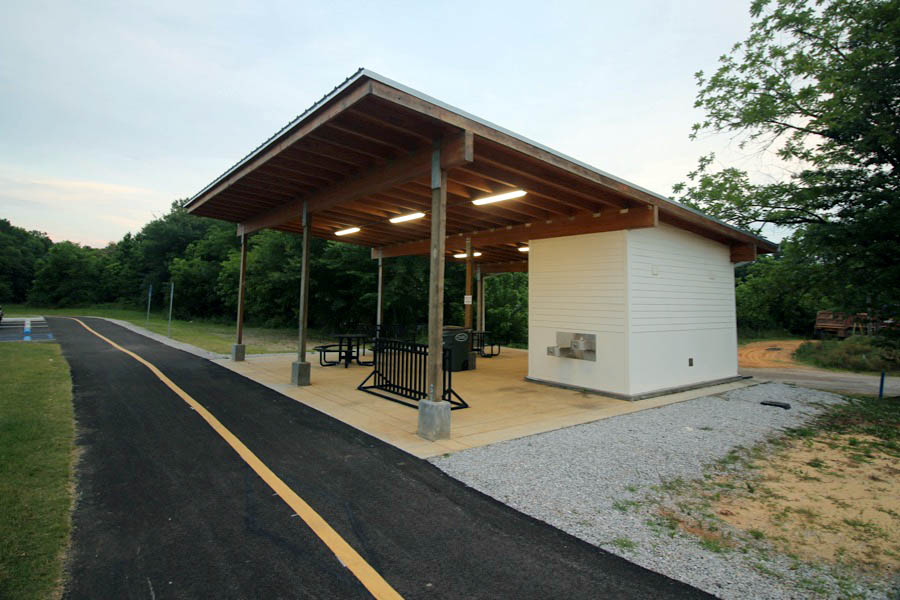
Houston, Ms / Jun 2020 / RWH

Click to see the Houston trailhead plotted on a Google Maps page

Established in 1836 Houston is one of two county seats of Chickasaw County. The land on which Houston resides was donated to the city by Judge Joel Pinson on the condition that it would be named for Sam Houston, a childhood friend. In 1909, Houston became home to the first Carnegie library in the state after L.B. Reid, then-superintendent of schools, wrote to Andrew Carnegie telling of the need for a public library. Houston is also home to the National Champion Sundancer Solar Race Teams, having won numerous consecutive national titles in the Solar Car Challenge. It hosts the Mississippi Flywheel Festival both in April and September of every year.

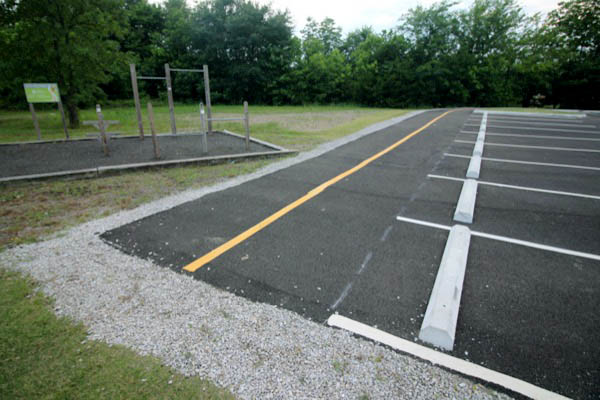
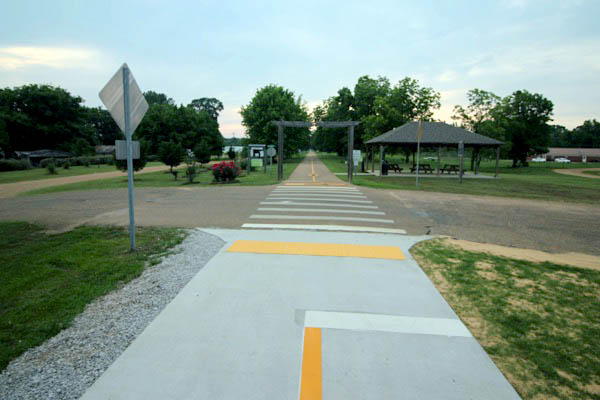
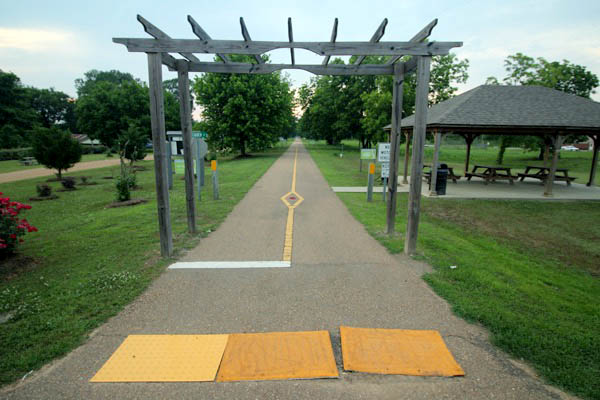
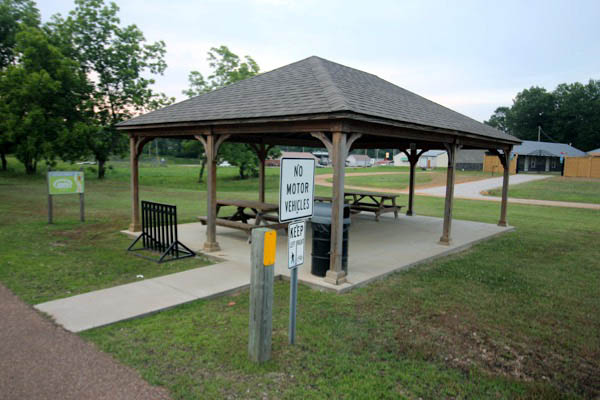
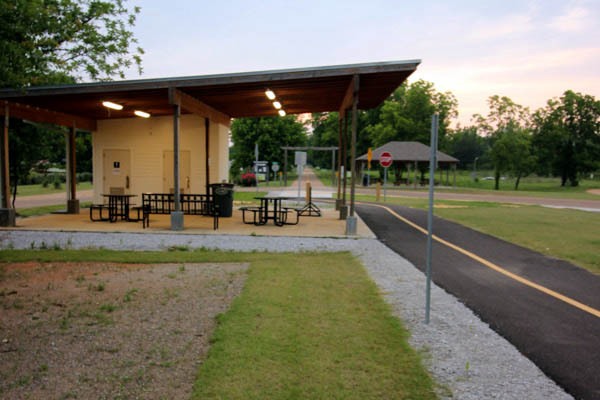
Jun 2020 / RWH
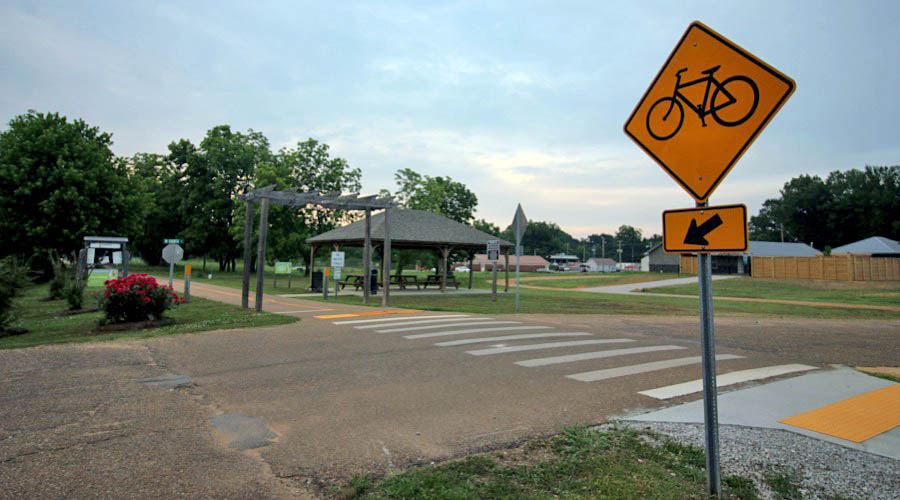
Houston, Ms / Jun 2020 / RWH

Houston, Ms / Jun 2020 / RWH
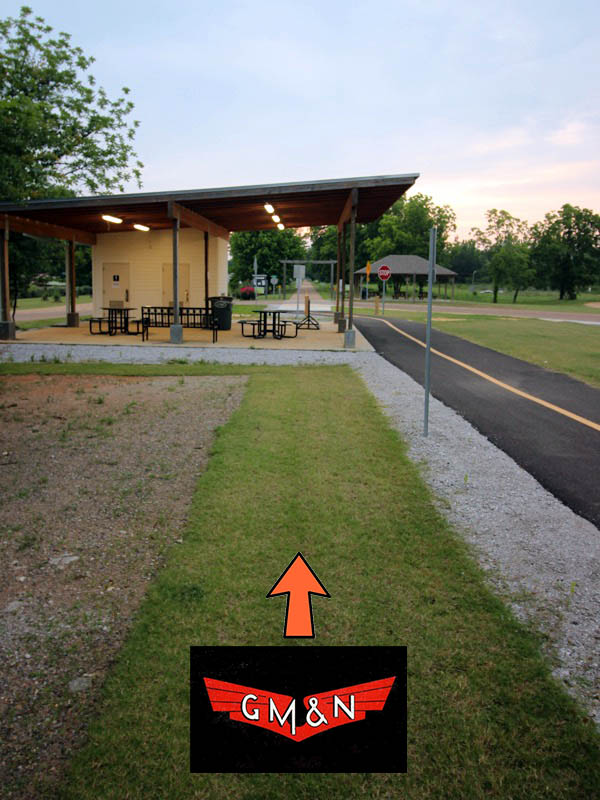
northbound / Jun 2020 / RWH
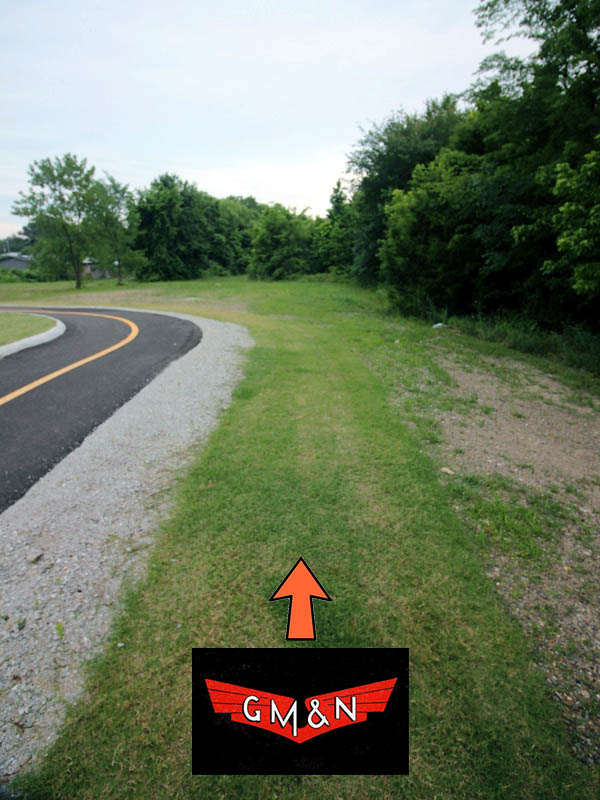
southbound / Jun 2020 / RWH
Links / Sources
- Tanglefoot Trail website
- Wikipedia article for Tanglefoot Trail
- TrailLink page for Tanglefoot Trail

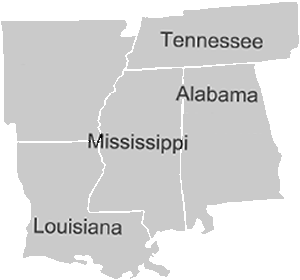


 Nestled in the rolling hills of North Mississippi and just an hour south of Memphis, the city of New Albany, Mississippi is a charming little city known for its vibrant downtown, antique stores, and friendly people. People have been coming here for years to shop at ourboutiques, antique shops, jewelers, and specialty shops. The city's convenient location and picturesque placement on the Tallahatchie River make it an ideal destination for a day trip, a weekend trip or as a possible home. As well, the city is quickly becoming renowned for its active, healthy environment. We hope you'll take a moment and explore our website and then we hope you'll take a day or two and come explore our town. We hope to see you soon!
Nestled in the rolling hills of North Mississippi and just an hour south of Memphis, the city of New Albany, Mississippi is a charming little city known for its vibrant downtown, antique stores, and friendly people. People have been coming here for years to shop at ourboutiques, antique shops, jewelers, and specialty shops. The city's convenient location and picturesque placement on the Tallahatchie River make it an ideal destination for a day trip, a weekend trip or as a possible home. As well, the city is quickly becoming renowned for its active, healthy environment. We hope you'll take a moment and explore our website and then we hope you'll take a day or two and come explore our town. We hope to see you soon!




